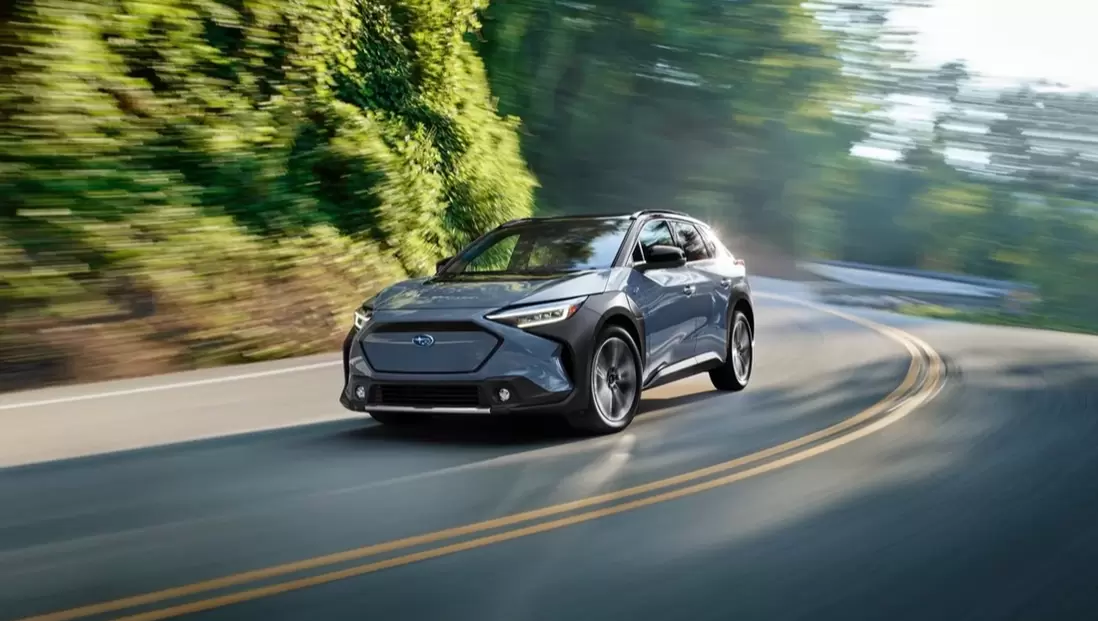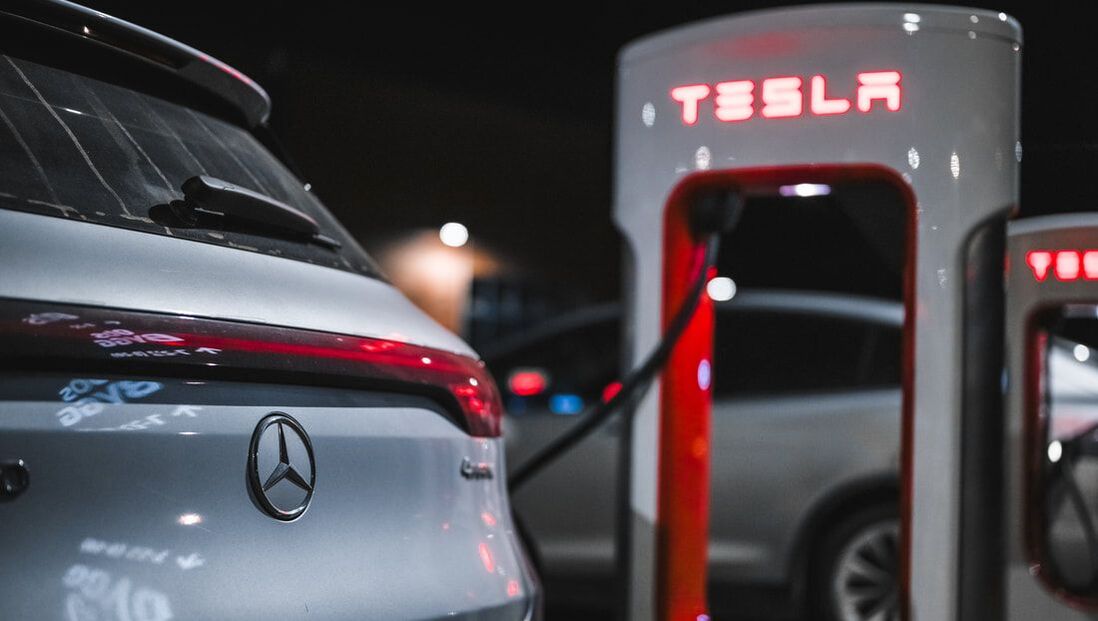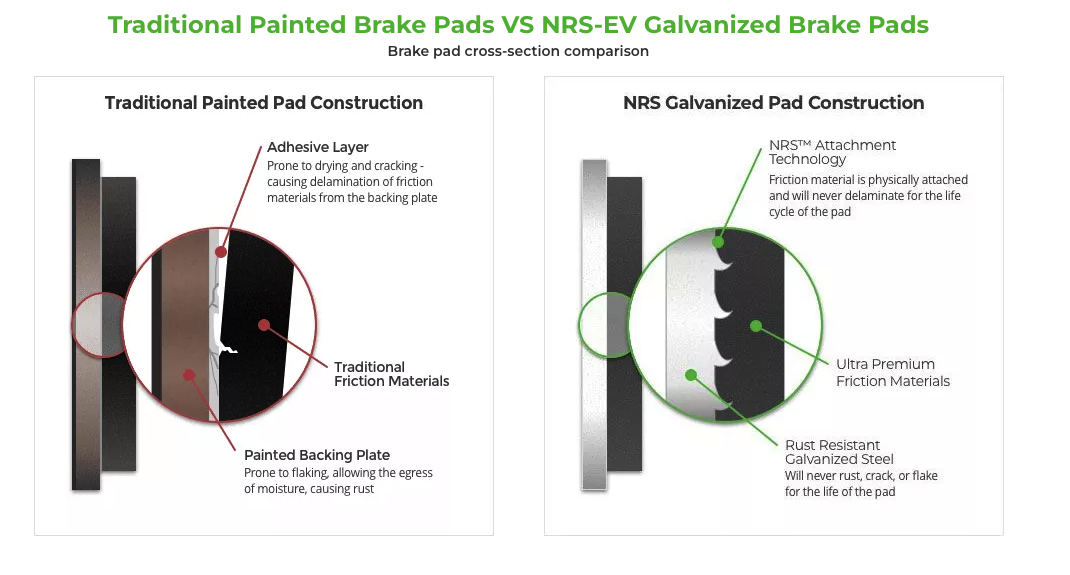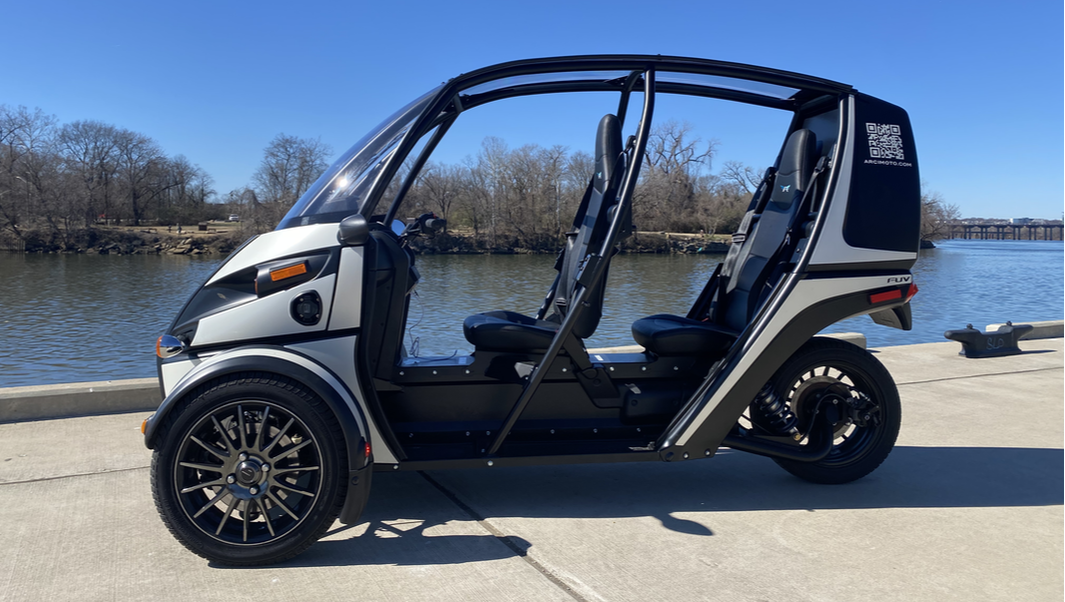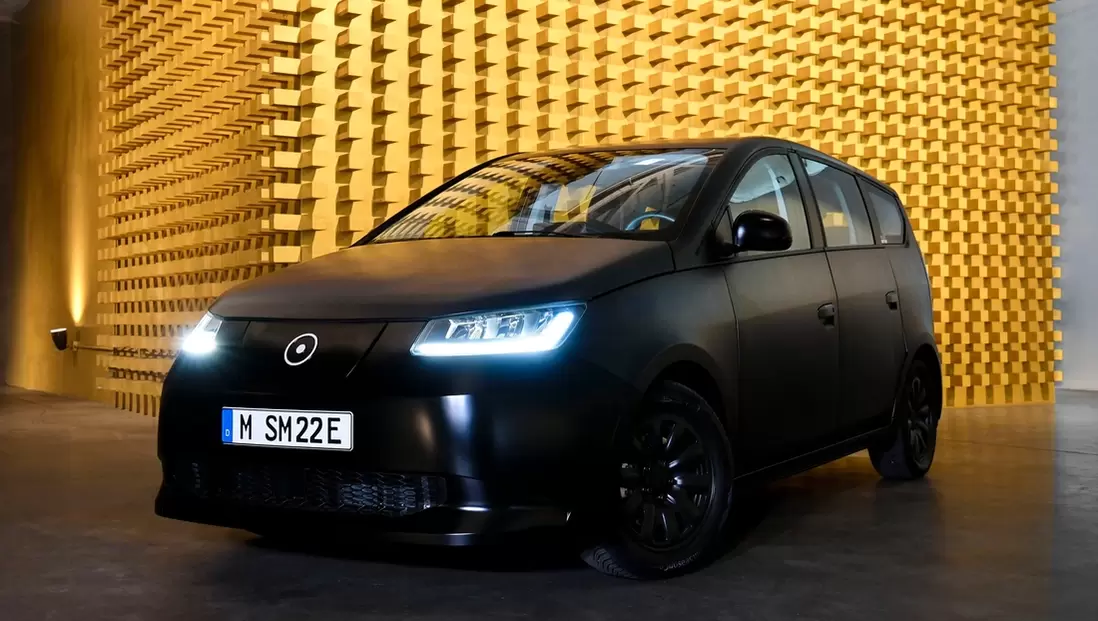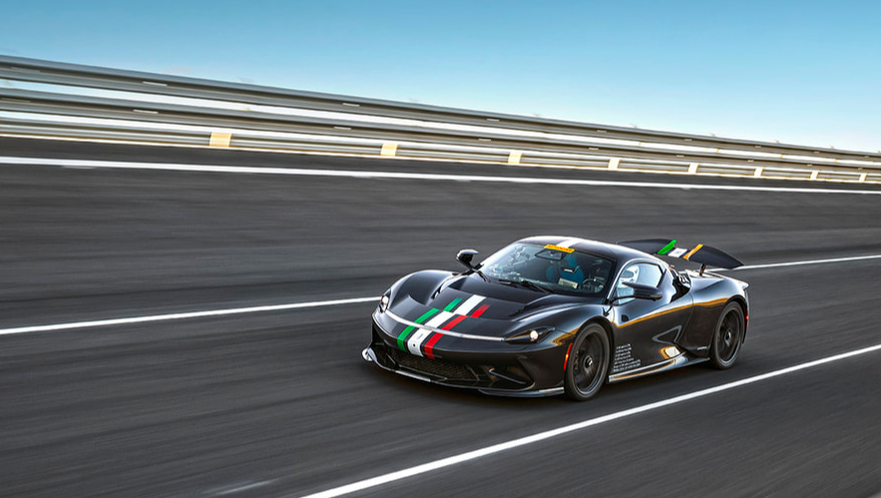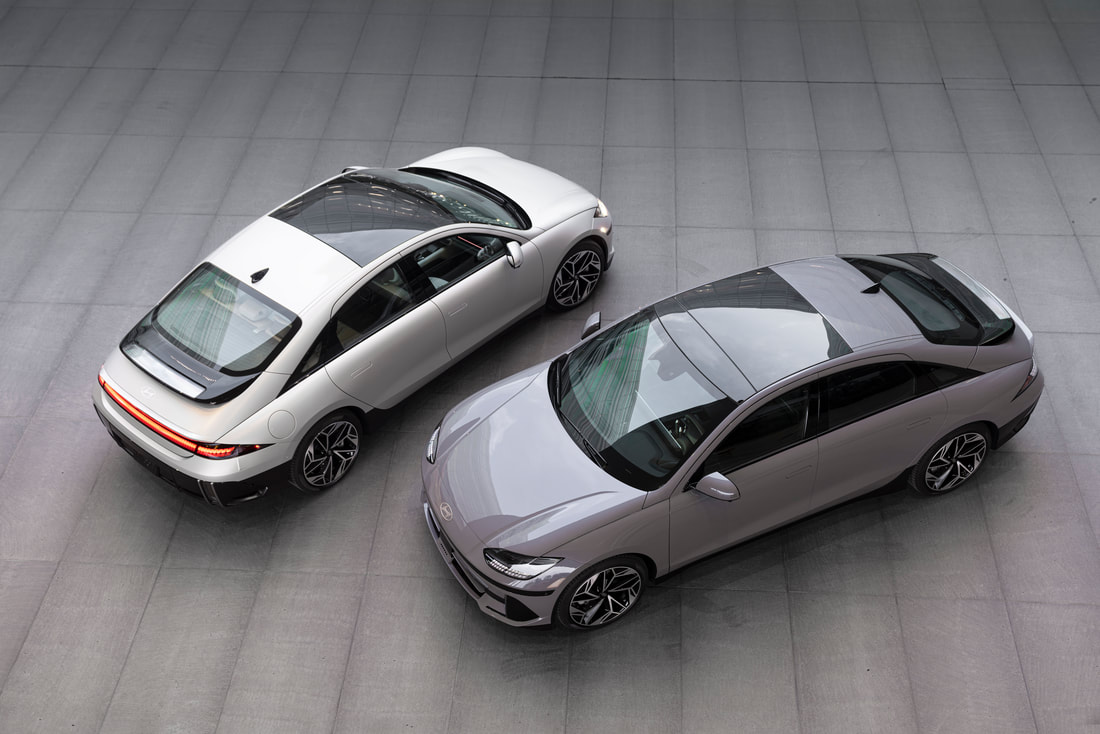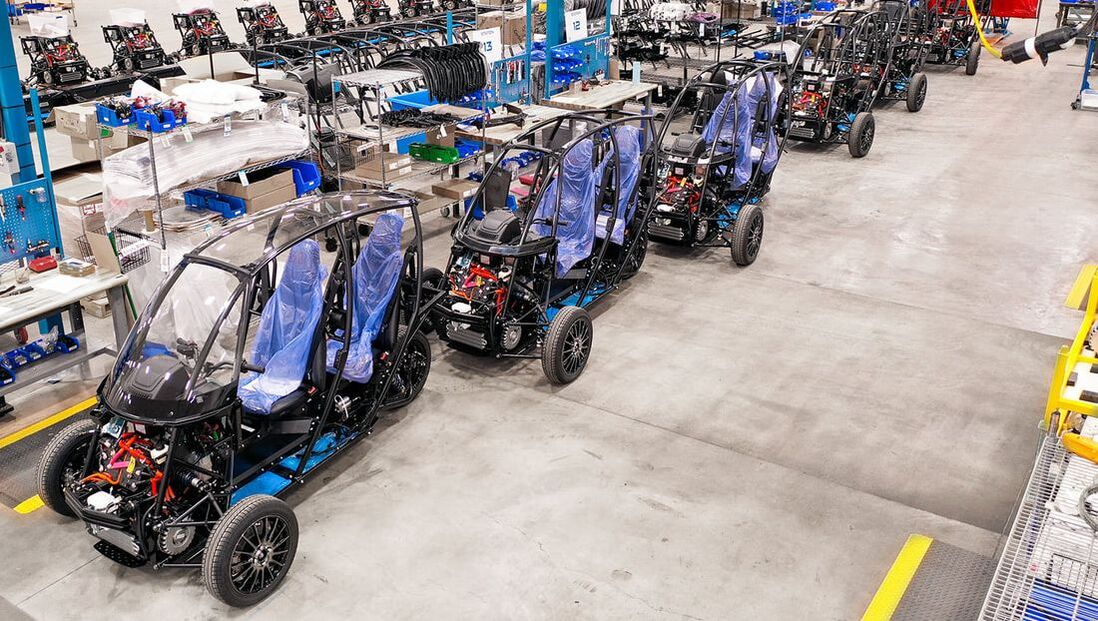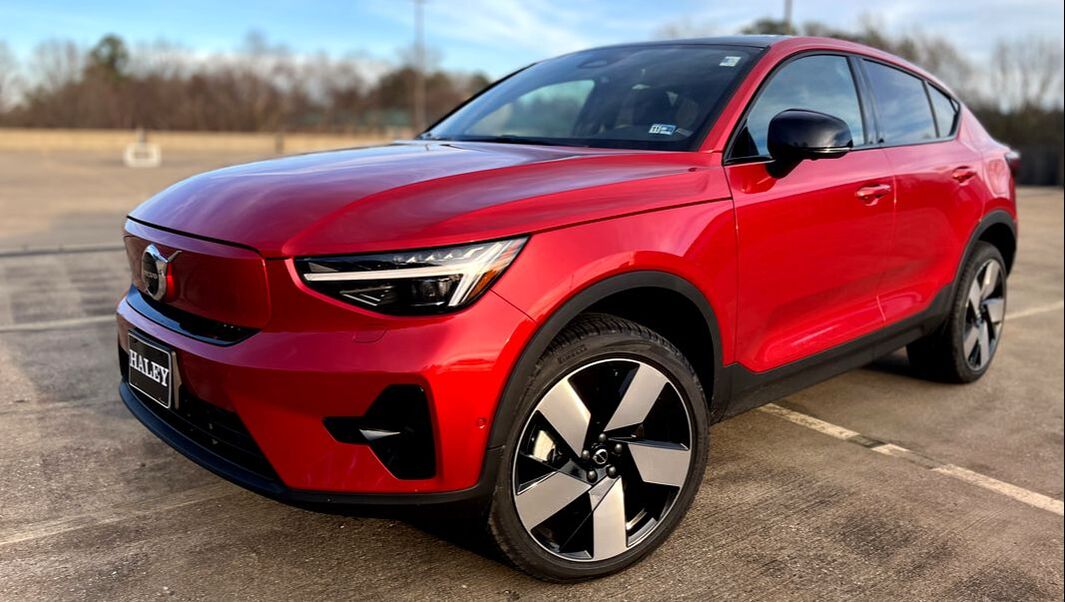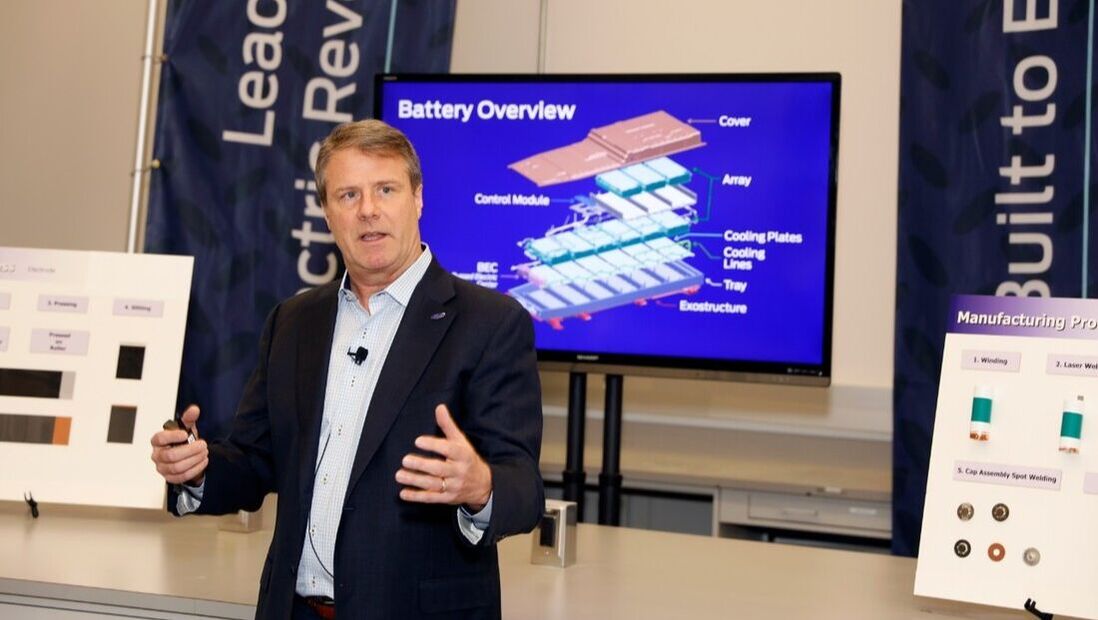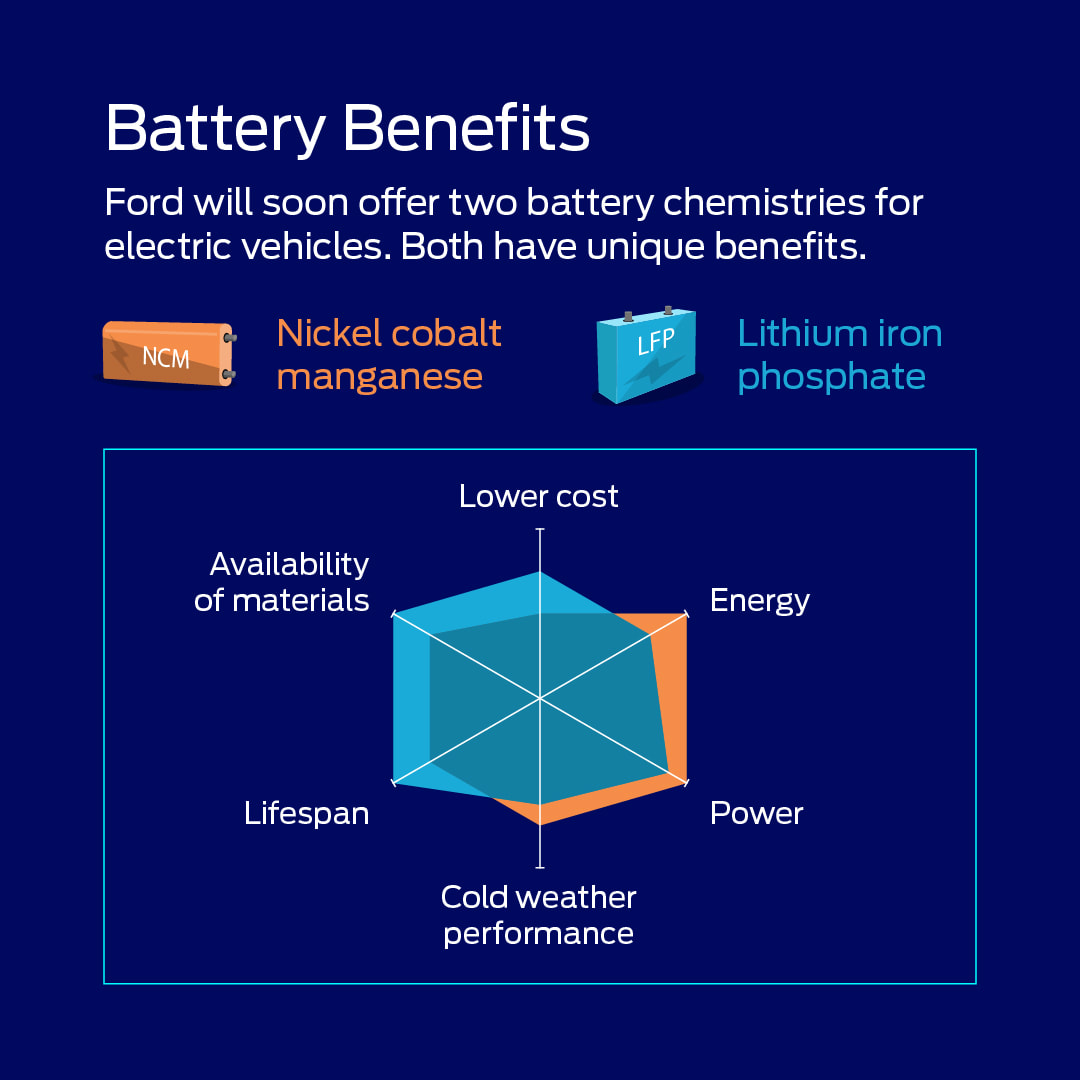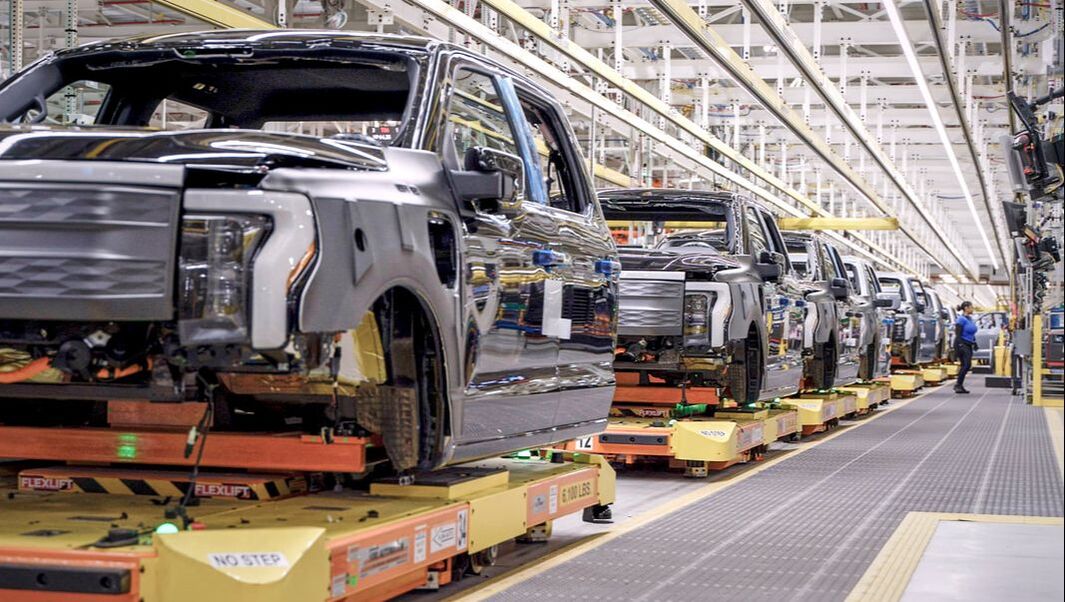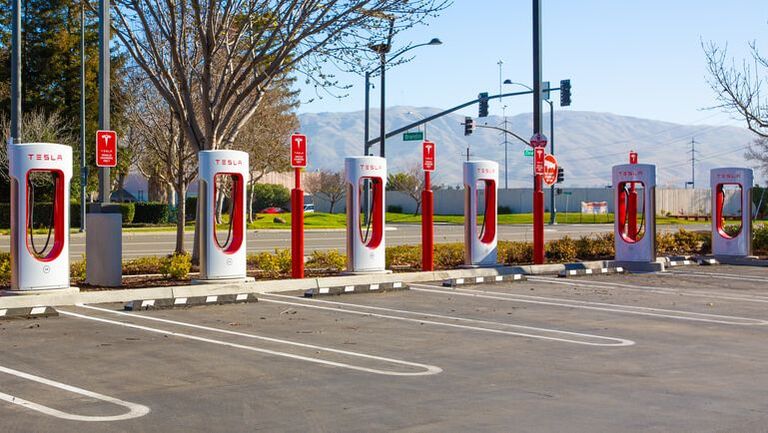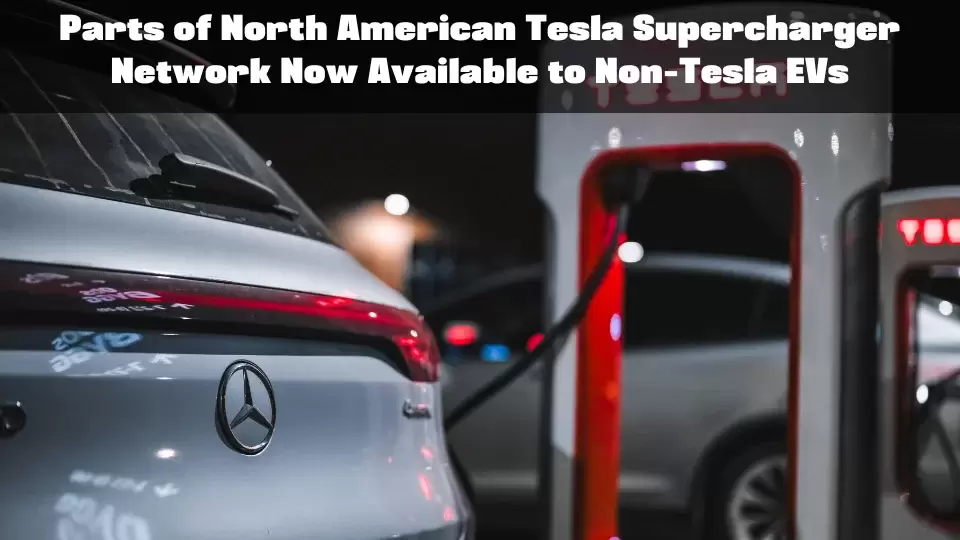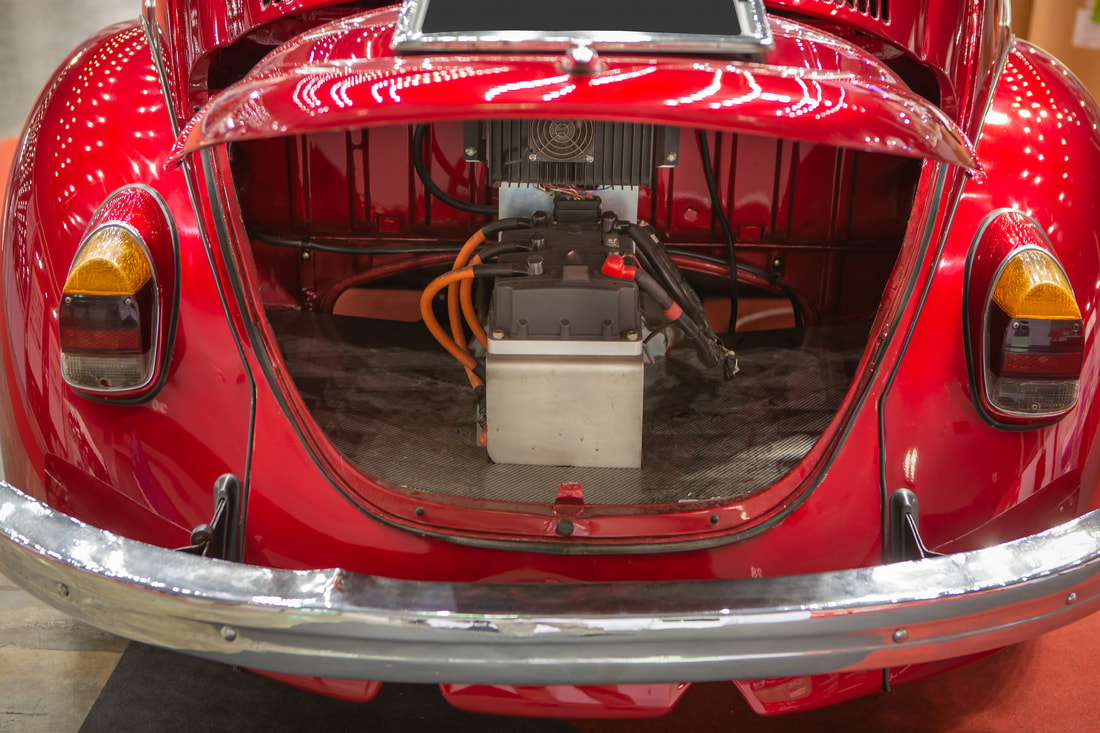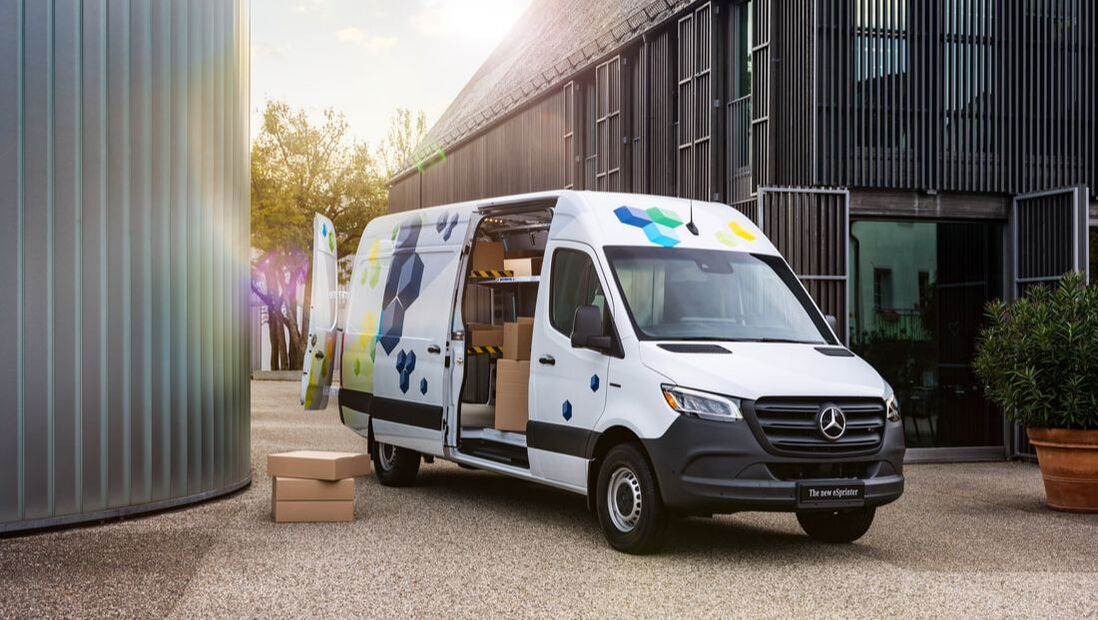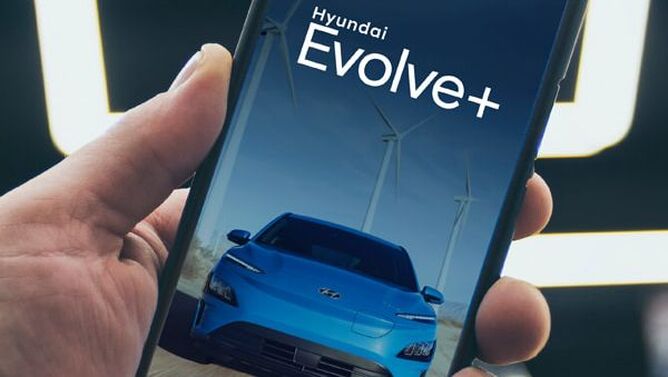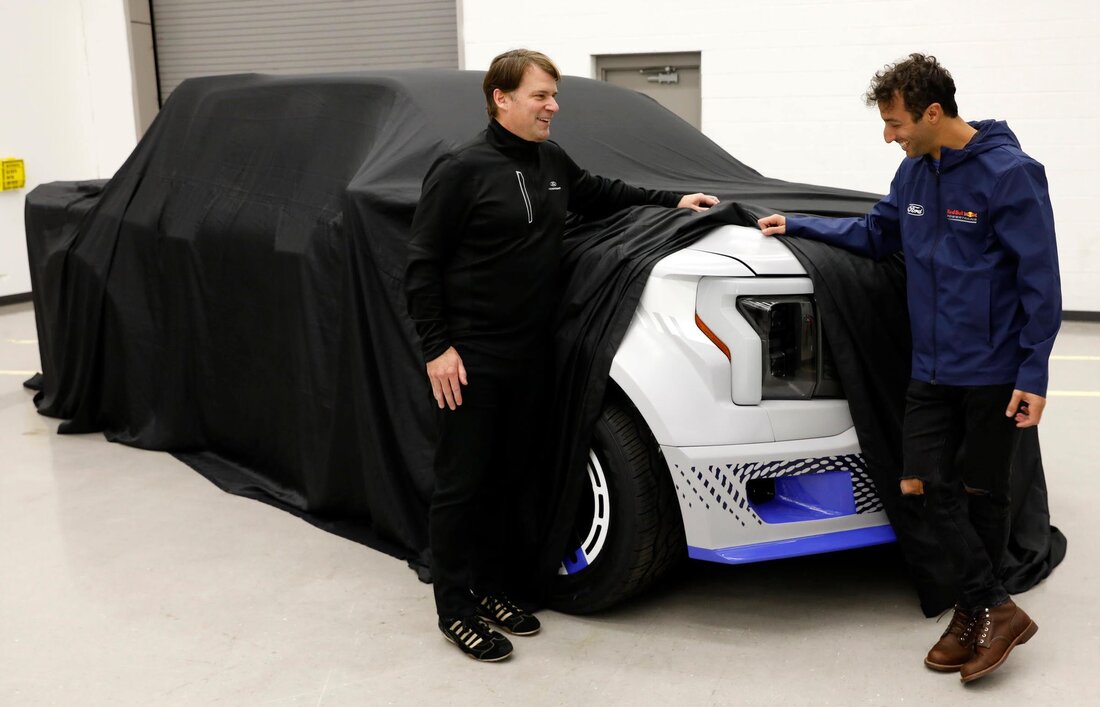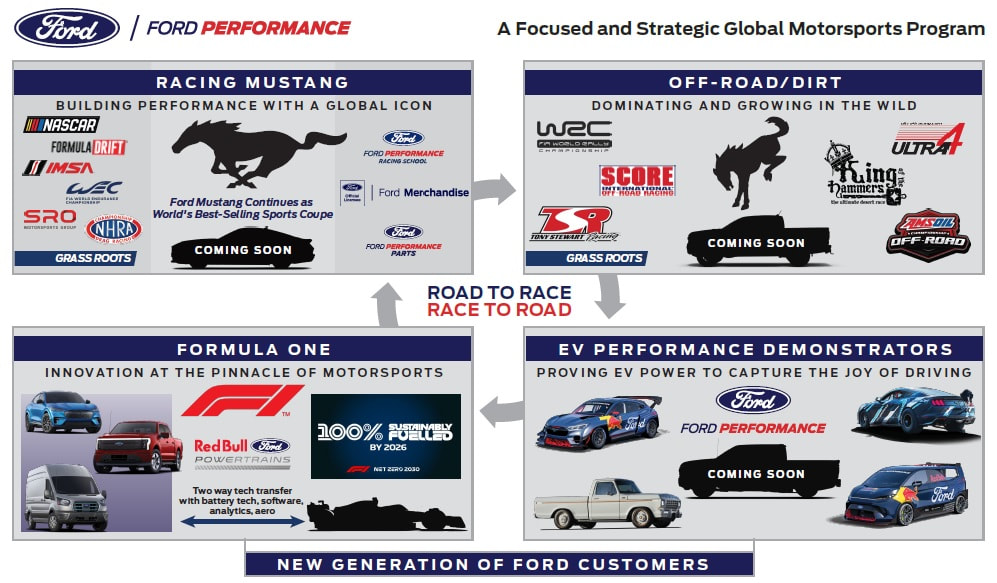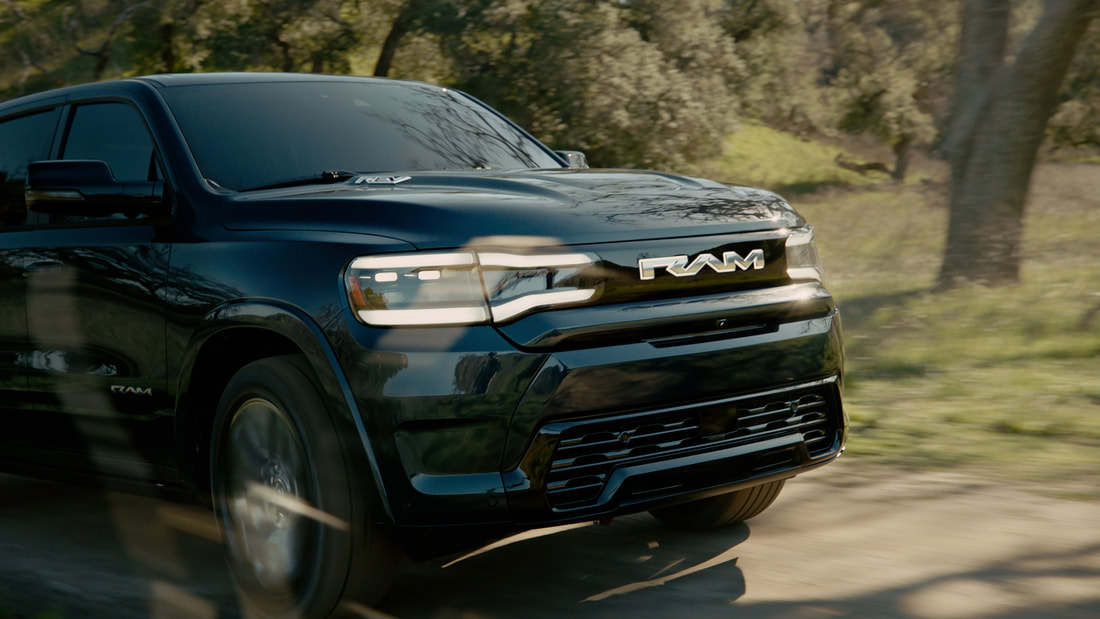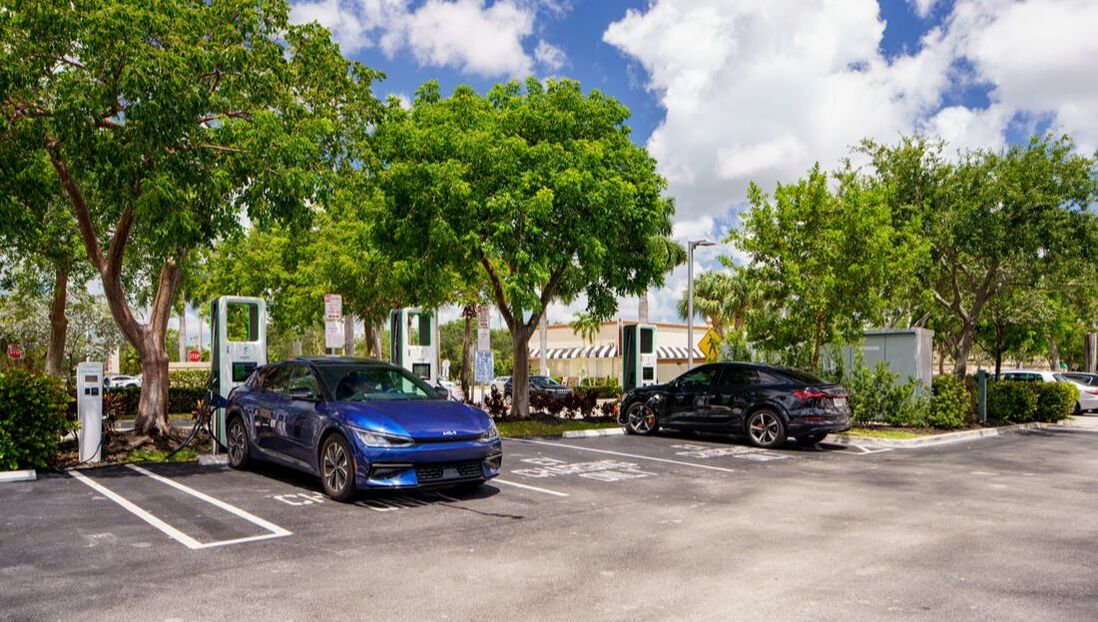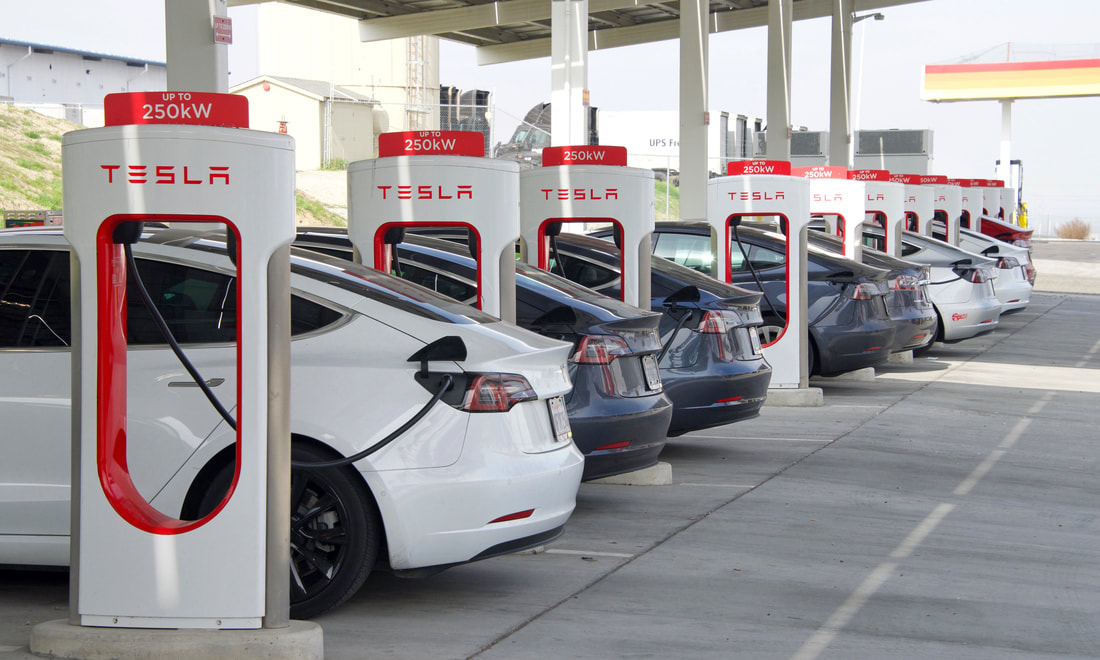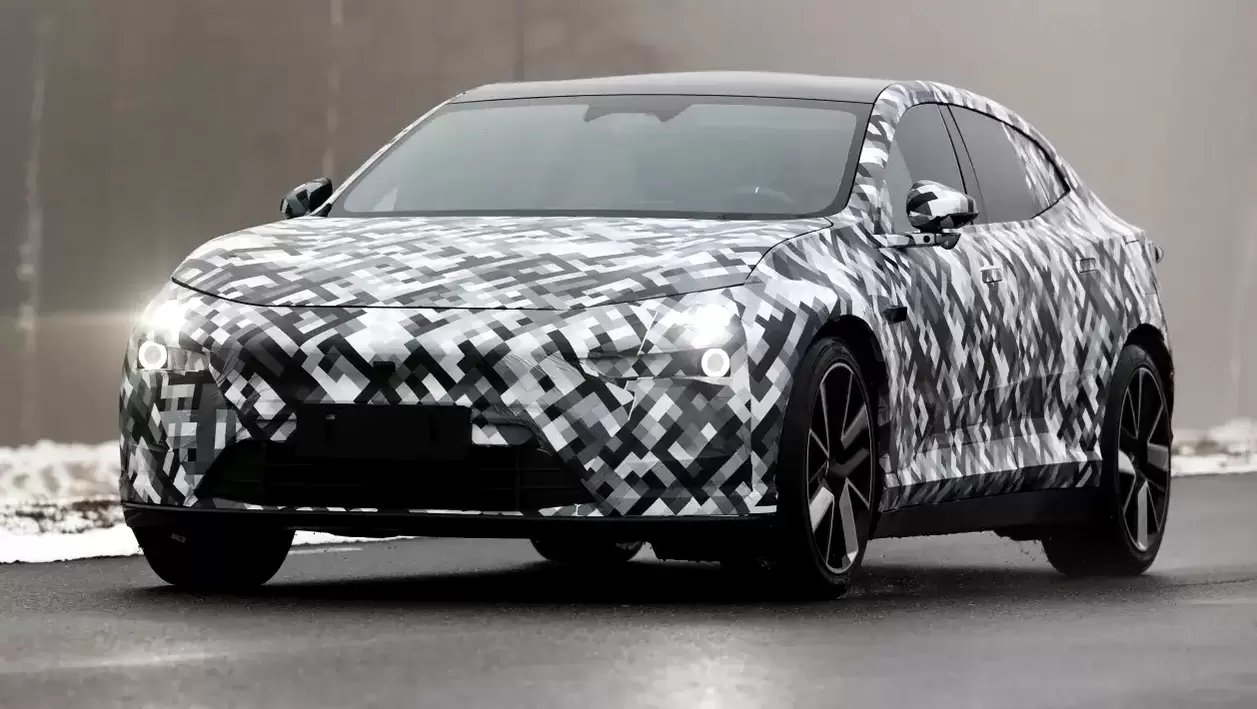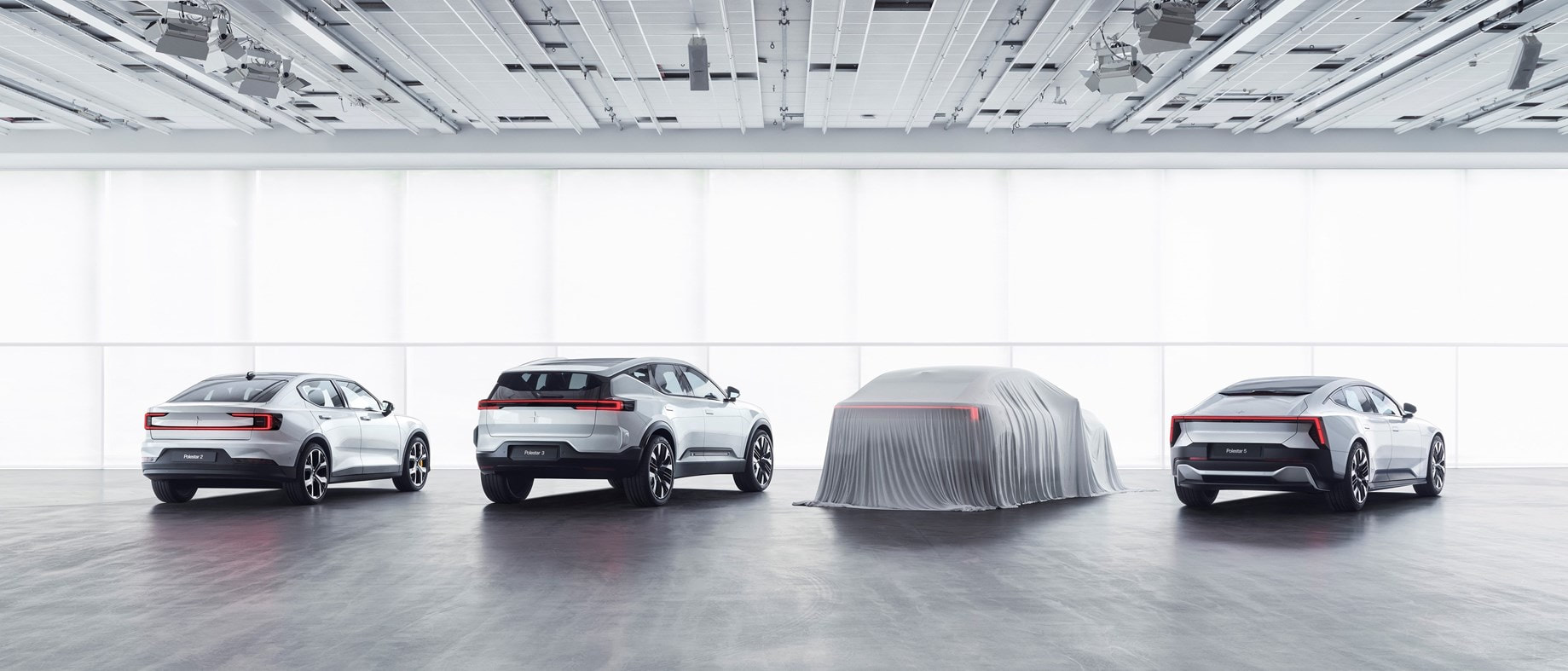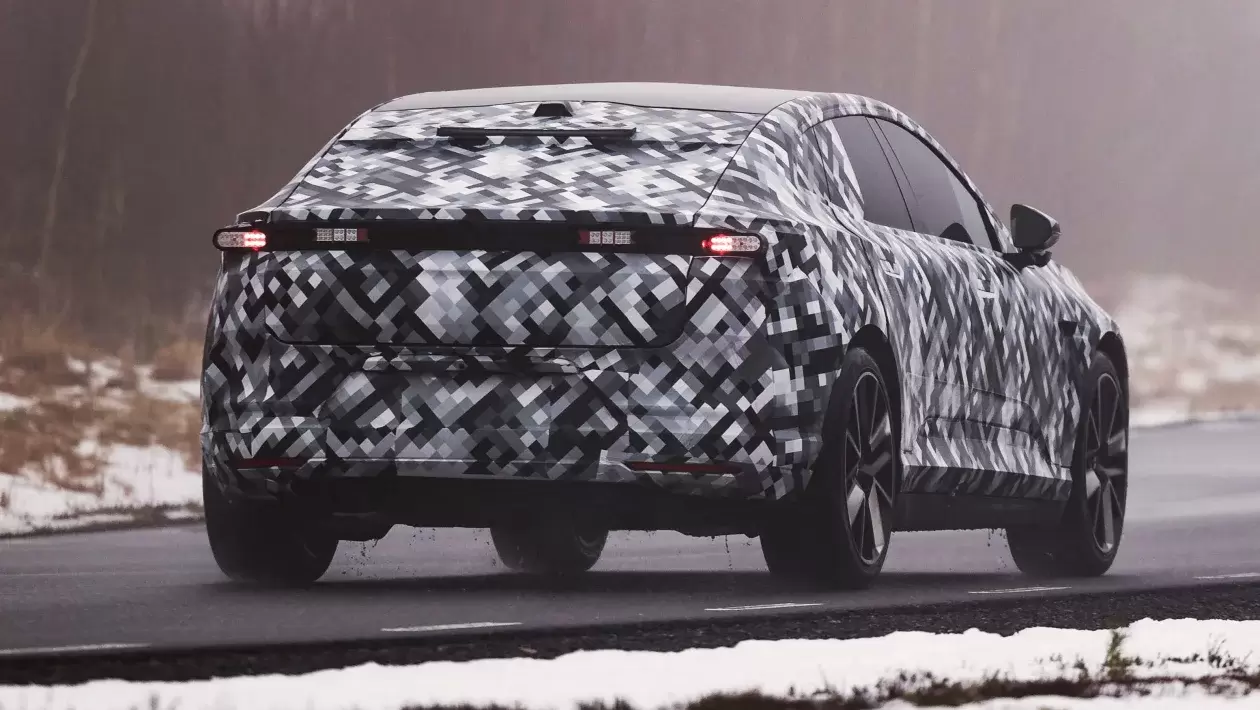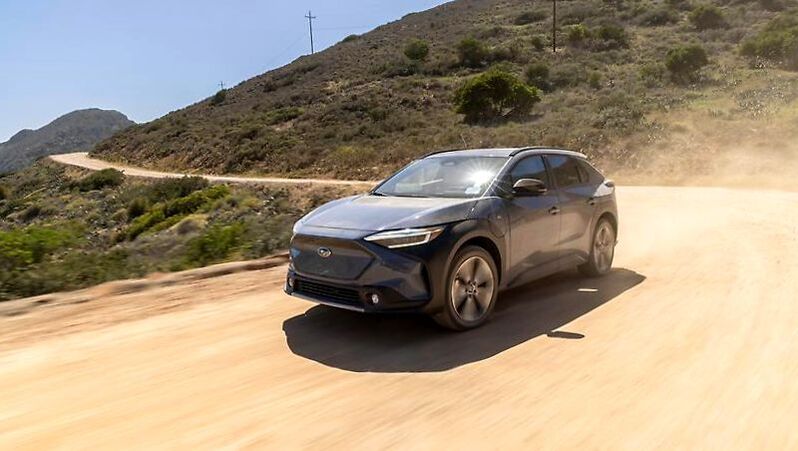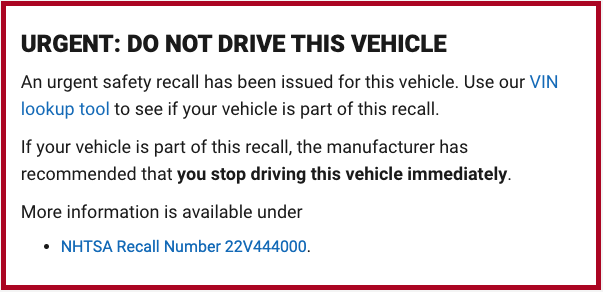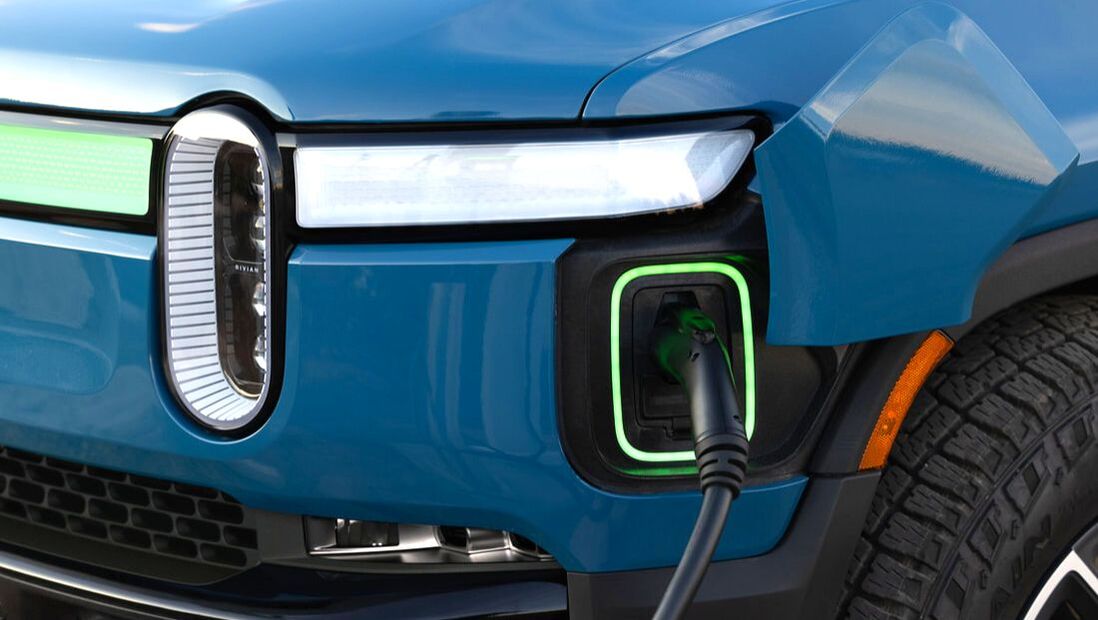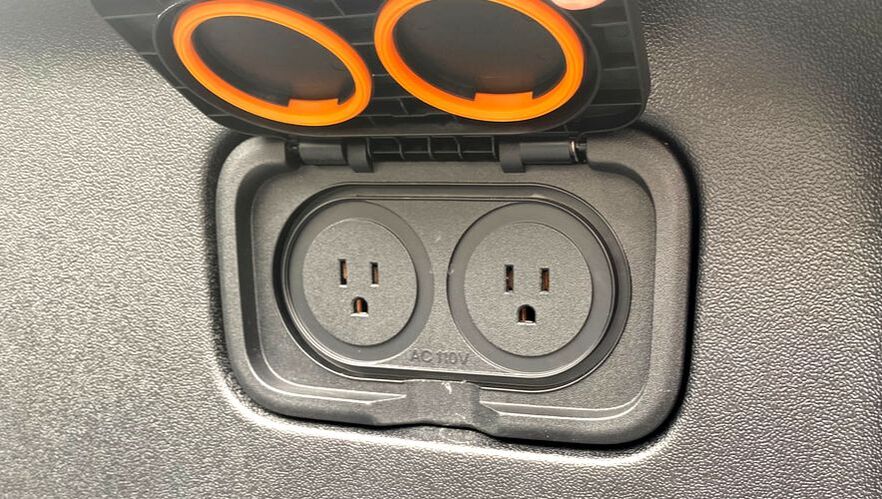|
On March 3rd, Subaru of America, Inc. (SOA) made an announcement regarding a modification in its senior management hierarchy. Starting from April 1st, Thomas J. Doll, the current President and Chief Executive Officer, will relinquish his day-to-day managerial responsibilities and instead become a Corporate Advisor stationed at the company's headquarters in Camden. “I would like to express my sincere gratitude for the contributions Tom has made over the past 40 years. I fondly remember the days we spent working together at Subaru of America from 2014 to 2017,” said Tomomi Nakamura, President and CEO of Subaru Corporation (SBR). “He is truly a great contributor. I am deeply grateful for his long-time dedication that has made Subaru what we are today. His commitment and friendship have helped to grow Subaru of America into a very strong position in the U.S. market and has created a strong and valued brand. But his leadership and the creation of the Love Promise initiative have truly elevated Subaru to be more than a car company.” Starting April 1st, Tadashi "Tady" Yoshida will take over as Chairman and Chief Executive Officer of Subaru of America, Inc., succeeding Thomas J. Doll. Currently serving as Executive Vice President, Yoshida has been a part of Subaru of America for two years and has been associated with its parent company, SBR, for 34 years. Throughout his career, he has held several senior positions in SBR, including in Overseas Sales and Marketing, Global Marketing, and Customer Service Division. Furthermore, Subaru of America, Inc. has announced that Jeffrey A. Walters will be promoted to the position of President and Chief Operating Officer, effective immediately. Walters has been associated with SOA for over 30 years and currently serves as Senior Vice President of Sales. He was appointed as Senior Vice President in 2014 after working as Vice President of Field Operations. Prior to that, he held several key positions, including Director of Field Operations, Regional Sales Manager, and Brand Strategy Manager. “The Subaru brand and Subaru of America hold a special place in my heart. Since the day I arrived here 41 years ago, we have worked tirelessly to make Subaru more than a car company. The growth of this company has been nothing if not spectacular, but I am most proud of the good we have done with our Love Promise programs and the lives we have impacted. It is the employees of Subaru of America, the great friendships we have developed and our amazing customers and retailers who are the secret of our success,” said Doll. “We are headed into an exciting new time of growth for the industry, and I know we have an incredibly strong team in place to guide Subaru of America forward.” During Thomas J. Doll's tenure as the Executive Vice President and Chief Operating Officer in 2009, and subsequently as President in 2013 and CEO in 2018, Subaru of America witnessed an unparalleled growth trajectory. Thanks to his leadership, the company achieved 12 consecutive years of sales records from 2008 to 2019, with the exception of the COVID-19 pandemic's production shutdown. Doll's association with SOA spans over 40 years, during which he has held various key positions such as Chief Financial Officer, Vice President of Business and Strategic Planning, Director of Accounting, Director of Treasury Operations, and Manager of Treasury Operations. Source: Subaru of America
On February 28, Tesla announced on its official charging account on Twitter that it had equipped select Superchargers with CCS (Combined Charging System) charging adapters, which are compatible with other electric vehicle (EV) brands. While Tesla did not disclose the exact number of chargers that have been opened to other brands, several locations in California and Buffalo, N.Y. (where the Superchargers are produced) are shown as available in the Tesla app.
To use these Superchargers, non-Tesla EV owners will need to download the Tesla app and select the CCS adapter. Through the app, they can monitor the charging rate, total charge given, and total cost of charging in real-time. However, it is important to note that not all Tesla Superchargers have been equipped with CCS adapters, and the program is still in the pilot phase with limited access. This move by Tesla to open up its Supercharger network to other brands marks a significant shift in the EV market, as it allows non-Tesla EV owners to access one of the most extensive and fastest charging networks available. With the Superchargers' fast charging speeds of up to 250 kW, non-Tesla EV owners will be able to add hundreds of miles of range in just a few minutes of charging, making long-distance travel in EVs more feasible and convenient. That being said, they have only announced plans to retrofit and build new sites for a total of 3,500 chargers with the "Magic Dock" CCS adapter by the end of 2024, and not the entirety of the more than 17,000 superchargers in North America. Non-Tesla EV owners who wish to use the Tesla Supercharger network can do so, but they will be charged a higher price per charge compared to Tesla owners. As an alternative, they can opt to sign up for a membership through the Tesla app. The monthly fee for the membership is $12.99, but it grants them access to the same lowest price per kWh offered to Tesla owners (who don't have to pay the monthly subscription).
It remains to be seen how this change will affect the nearly perfect rating that Tesla has regarding the Supercharger Network user experience. As other public fast charging networks have been plagued with issues such as broken or inoperable chargers and bandwidth problems, according to user complaints, Tesla continually ranks at the top with its seamless charging process. A 2022 survey by Plug In America revealed that the most commonly reported issue by EV owners was broken or non-working chargers. In contrast, the Tesla Supercharger network scored "significantly better than its competitors on every metric."
However, some experts have raised concerns that opening up the Supercharger network to other EV brands could negatively impact its reputation for reliable and fast charging. Guidehouse Insights analyst Sam Abuelsamid has stated that "there is a strong likelihood that if they open the Supercharger network to other vehicles, their current excellent reliability rate will decline significantly," as quoted by Reuters. By adding CCS compatibility to its proprietary hardware and software, Tesla could potentially encounter new technical issues and challenges. Nonetheless, Tesla's decision to open up its Supercharger network to other brands shows a commitment to advancing the growth of the EV market and providing a more accessible charging infrastructure for all EV owners.
In a tweet Friday afternoon, paired by a press release from the South Carolina Governor's office, Volkswagen Group announced plans to invest $2 Billion to construct a new factory that is assigned to build all-electric trucks and SUVs under the recently revived Scout brand. The factory site will be in Blythewood, SC and will be home to 4,000 jobs when fully operational.
Governor McMaster praised Scout Motors for choosing South Carolina as their production site and emphasized the positive impact the company's investment will have on the state's economy. The Governor also noted the potential for future growth and development in the electric vehicle industry.
“Scout Motors will provide thousands of South Carolinians with previously unimagined opportunities and prosperity for generations to come,” said Governor Henry McMaster. “The Palmetto State, with its rich history, superior people, and sterling automotive manufacturing reputation, is the perfect place to re-start this iconic American brand.” Scout Motors CEO, John Smith, expressed his excitement about the new production site and the opportunity to create jobs in South Carolina. He also highlighted the state's business-friendly environment and strong workforce as factors that contributed to their decision. “We’re honored to partner with South Carolina to usher in this new era for Scout,” said President and CEO of Scout Motors Scott Keogh. “Scout has been an American icon since introducing an SUV in 1960. It's the vehicle that took your family on a camping trip, that gave access to the great outdoors, and that showed up on the job site every morning. Today, we’re reimagining Scout’s original ingenuity and electrifying its future. We’re bringing the Scout spirit to South Carolina and it's going to be a hell of a ride.” The new facility is expected to be operational by 2026 and will produce a range of electric vehicles, including pickup trucks and SUVs. After his foot punched the brake pedal, Bryan immediately knew he had a problem. There was a loud ‘clunk’ followed by a screeching worse than anything he’d heard before. The Tesla slowed partially (thanks to regenerative braking), but he needed more stopping force than what the electric motors provided. The car in front of him didn’t see it coming either, and the resulting collision sent broken parts flying in all directions. At the time when he needed the brakes the most, they failed. Luckily, I made this story up. So don’t worry about Bryan and his Tesla, they’re fine. But the reality of brake failure is a real concern, especially for EV owners… that is if they knew about the dangers. Unfortunately, most don’t know about the hidden dangers of traditional brake pads. I didn’t know either. I thought brakes on EVs weren’t something that needed attention because they rarely get used, if at all, and I wasn't alone in thinking like this. However, this misconception that EV owners have about how braking systems in these vehicles work could result in a catastrophic situation if not properly addressed. Knowing what causes the brake pads to fail and how to prevent that from happening could literally mean the difference between life and death. So what causes brake pads to fail? I recently had a conversation with Montu Khokhar - CEO of NUCAP Technologies and NRS Brakes, and Blake Fuller - team owner and driver of Electric Performance Racing, to discuss this very important topic and what they shared with me was very revealing. Watch the conversation I had with Montu Khokhar and Blake Fuller here:Traditional brake pads are made up of a steel backing plate and the brake pad friction material that is adhered to the backing plate with a specialized glue. Typically, in a gas-powered vehicle when the driver steps on the brake pedal, this friction material is pressed against the brake rotor causing friction. This friction turns the energy of vehicle movement into heat which dissipates any moisture that collected on the brake pads.
However, with electric vehicles and hybrids, that rely on regenerative braking, the friction brakes are rarely, if ever, used. This can cause moisture to build up in between the friction material and the backing plate resulting in separation of the pad, rust, and corrosion. All of this while the friction material itself looks relatively unscathed. To even an experienced technician, a quick "brake check" only examines the remaining pad material to determine when replacement is necessary. They don't disassemble the braking system to examine the pads closely... and if there is any of the above issues going on, it's likely to be missed. So what can owners do? There are a few options. The first being that every now and then you stand on the brakes to exceed the available regenerative braking from the electric motors and force the friction material to contact the brake rotors. This will result in the process outlined above causing the moisture to dissipate and avoid the problem. However, as you might be thinking, this could cause any number of other problems, not to mention that it isn't exactly the safest thing to do to your vehicle. Secondly you can replace the brake pads with a set of pads that use a galvanized steel backing plate that won't rust or corrode. There is currently only one company that is making these types of pads: NRS Brakes. This isn't a promotion for NRS Brakes, and I haven't received anything from the company to promote their products.. but honestly... when I heard about what they were doing, I couldn't resist learning as much as I could and bringing this valuable information to all of you. This problem is big, and I really feel that knowing this information could be the difference between life and death for the person that finds themselves in the same situation as our fictional Bryan and his Tesla. So would I recommend replacing your brake pads with NRS galvanized brake pads? Yes, absolutely 100%. But it's because I want you to be safe. I want you to know you're safe, and have peace-of-mind that you really don't have to worry about your brakes. Replace the false misconception with the real reality and we'll all live in a safer world. And finally, if you're a visual person, I stole this photo (below) from the NRS web page that show the differences between traditional brake pads and the NRS galvanized brake pads. You're welcome. Fresh on the heels of a $12 Million public offering that closed in January, Arcimoto has announced an additional $6 Million in funding by means of a real estate loan on their Eugene, Oregon factory. A press release from February 22nd states, "A portion of the net proceeds from the offering were used to repay the convertible note with 3i. The remaining funding will be used for working capital and general corporate purposes." The company seems to be getting back on their feet after production of the FUV and related vehicles was halted due to financial concerns last month. Just last week Arcimoto announced that production of the FUV and Deliverator were resuming and product improvements had been made. Jesse Fittipaldi, Arcimoto Interim CEO said, “We announced this week the start of 2023 production with new steering features and improvements on the FUV and Deliverator. This additional funding paired with our efforts in reducing vehicle costs and increasing sales gives the team practical confidence as we continue to focus on the growth of FUV and Deliverator programs." While these latest announcements don't guarantee anything for Arcimoto in the long term, the new funding has given the company a much-needed lifeline, allowing it to resume production of the FUV and continue its mission to provide sustainable transportation options. The FUV is a three-wheeled electric vehicle designed for daily commuting and short trips around town. It has a range of up to 102 miles per charge and can reach a top speed of 75 mph. The FUV is also highly efficient, with a cost per mile of less than 10 cents. Arcimoto's resumption of production is great news for the company's employees, customers, and investors. It also represents a significant step forward for the electric vehicle industry, as the FUV is a unique and innovative vehicle that fills a gap in the market for sustainable, affordable transportation. Source: Arcimoto Press Release
Sono Motors, a Munich-based company that focuses on developing sustainable mobility solutions announced recently that the Sono Sion Solar EV will not be produced after all. While reception of the vehicle had been pleasant, supply chain disruptions and financial challenges have ultimately forced the company to halt production... and that's a real shame. While I wasn't a fan of the styling of the Sion, or the limited range of only 155 miles, I did get really excited about the prospect of a mobile solar-powered 35 kWh battery with bi-directional charging. Especially when considering that the company had intended to sell the Sion for around $30,000. That's amazingly inexpensive and quite the deal for the technology a potential owner would receive. Sadly though, it looks like the sun has set on the Sion (you see what I did there?). In a blog post on its website, Sono Motors co-founder Laurin Hahn announced the halt of production and stated that it remains committed to its vision of sustainable mobility, but will continue to explore other solutions. The company also expressed its gratitude to its supporters and investors, and stated that it will be providing updates on its future plans in the coming weeks. "We are extremely saddened that we have terminated the Sion program so close to bringing it to the streets. We are still fully committed to making a real difference in mobility and making every vehicle solar. Therefore we have made the decision to continue with our solar B2B business. This was a very difficult decision, as you can imagine, and we do not take it lightly," he said. "Despite more than 45,000 reservations and pre-orders for the Sion, we were compelled to react to the ongoing financial market instability and streamline our business. Given also the resource intensive nature of the Sion program, including personnel requirements, we are now implementing a significant cost reduction program. This includes the redundancy of approximately 300 employees. This is not a decision we take lightly and we are incredibly grateful for their hard work and dedication to Sono Motors.” The Sion solar-powered car was a bold and innovative project that aimed to revolutionize the automotive industry with its sustainable technology. While the project has consistently faced significant challenges, Sono Motors' commitment to sustainable mobility remains strong. It will be interesting to see what the company's next steps will be and how it will continue to contribute to the transition to sustainable transportation.
Bentley, the British luxury automaker, has announced that it will cease production of its 12-cylinder engines, including the most powerful version ever, as part of its transition to electric vehicles. The future for the 6.75-liter V12 engine that has been an iconic feature of Bentley cars for almost 100 years is coming to an end. In a press release, Bentley explained that the decision was driven by the company's commitment to reducing its environmental impact and becoming carbon neutral by 2030. The company plans to focus on the development of high-performance electric vehicles to meet the demands of its customers and contribute to a more sustainable future. According to Bentley's CEO, Adrian Hallmark, the decision to end 12-cylinder engine production was a difficult one, but necessary for the long-term success of the company. He stated that the company is investing heavily in research and development to create new, cutting-edge electric technologies that will power the next generation of Bentley cars. “Our progressive journey towards sustainable luxury mobility means making changes to every area of Bentley Motors," he said. "When we first launched the W12 back in 2003, we knew we had a mighty engine that would propel both our cars and the brand forwards at speed. 20 years and more than 100,000 W12s later, the time has come to retire this now-iconic powertrain as we take strides towards electrification – but not without giving it the best send-off possible, with the most powerful version of the engine ever created." Despite the announcement, Bentley will continue to offer its existing models powered by the engines, including the Mulsanne and the Continental GT. However, the company plans to gradually phase out these models in the coming years as it shifts towards a fully-electric lineup. The press release also highlights Bentley's commitment to sustainable practices, noting that the company has already made significant progress towards reducing its environmental impact. For example, Bentley has achieved an 85% reduction in carbon emissions at its factory in Crewe, England, and is using renewable energy sources to power its operations. The end of 12-cylinder engine production at Bentley reflects a broader trend in the automotive industry, as carmakers increasingly shift towards electric and hybrid technologies in response to growing concerns about climate change and sustainability. While it marks the end of an era for Bentley, it also signals an exciting new chapter in the company's history as it embraces a more sustainable and environmentally-conscious future. Source: Bentley
As the electrification of municipal fleets gains traction, one of the first electric fire trucks to be introduced in the United States has debuted at the Virginia Fire Rescue Conference in Chesapeake, Virginia.
Rosenbauer's RTX fire truck breaks new ground with its compact design, measuring only 92.5 inches wide while maintaining interior space. This allows emergency crews to reach their destination quickly and reliably, even on narrow streets. With two electric motors, the truck accelerates exceptionally well, especially in heavy traffic. While the drive design, with a low center of gravity and balanced axle load distribution, improves handling stability and reduces accident risk. Furthermore, the new wheel suspension system provides a larger steering angle, significantly reducing the turning radius, especially in all-wheel drive mode. The RTX fire truck provides ergonomic and tactical advantages that minimize physical strain on emergency crews and maximize operational success. The vehicle's driveshaft-free concept allows equipment compartments to extend downward, reducing crew fatigue. The body can also be lowered to a 10-inch entry height. Numerous assistance systems, including electronic rearview mirrors, rear camera, and automatic object recognition, keep the crew safe in difficult situations. The rotatable commander seats and oval seating arrangement improve cab communication, while powerful LED strips provide shadowless illumination and eliminate the need for a light tower. The RTX fire truck boasts two electric motors that produce a total output of 490 hp and a 150 kW charging rate. This enables flexible charging and fast battery recharging, resulting in zero local emissions on the road. Regenerative braking reduces brake wear and eliminates fine dust particles, benefiting urban environments. With its automatic engine shutdown and battery-powered lighting and equipment, the RTX reduces noise levels and improves air quality. The 3.0 Liter 300 HP 6 Cylinder BMW Clean Diesel Engine combined with an electric motor serves as a power generator, providing extra energy for longer operations and external devices if the batteries are low. To minimize errors during emergencies, the RTX fire truck employs a simplified and consistent operating concept. It serves as the hub of its own communication system, featuring autonomous Wi-Fi, drone integration, and a direct link to the operations center and EMEREC data center. With the optional RDS Connected Command System, emergency crews can receive continuous data, including incident reports, building plans, and camera images through a central deployment screen. Touchscreens and customizable actuation buttons provide intuitive and easy-to-use controls throughout the RX's design. The introduction of the RTX electric fire truck by Rosenbauer marks a significant milestone in the electrification of municipal fleets. The innovative design and technology of the RTX fire truck provide both tactical and ergonomic advantages to emergency crews, while also reducing environmental impact. With its compact size and exceptional performance, the RTX is poised to revolutionize the way fire trucks are designed and operated. As more cities and municipalities explore the benefits of electrifying their fleets, the RTX serves as an inspiration for the future of firefighting vehicles.
Throughout all of human history, the desire to be quicker, to go faster, and push the boundaries of what is thought to be possible has always been a constant. From the challenge to break the 4-minute mile to the race to create the quickest accelerating production car, humans have always sought to push their limits. It was once believed that certain physical feats were impossible for humans to achieve. Running the mile in less than four minutes was one such feat, until Roger Bannister broke the barrier in 1954 with a time of 3:59.4. Once that wall came down, many other people followed Bannister's lead, and now the current record is held by Hicham El Guerrouj of Morocco, who ran the distance in 3 minutes and 43.13 seconds. In the world of supercars, accelerating from 0-60 mph in less than two seconds was once thought impossible too, until the Tesla Model S Plaid and Rimac Nevara shattered that notion with their blistering speeds. However, these contenders have been outshone by the Automobili Pininfarina Battista Hyper GT, which has recently broken a large number of records and claimed the title of "King of Quick" during recent tests in India. With its unparalleled speed and performance, the Battista Hyper GT has established itself as the ultimate champion of the hypercar world. It is the quickest accelerating production vehicle ever made. A Legacy of Automotive Design For nearly a century, Pininfarina and its founder, Battista 'Pinin' Farina, have been known as the go-to choice for designing elegant and beautiful works of rolling art, including icons like the Alfa Romeo Spider 'Duetto,' Fiat '124 Sport Spider,' and 65 of Ferrari's greatest vehicles. While the company saw unparalleled success in their field, designing vehicles for other companies wasn't Farina's ultimate dream. He wanted a vehicle that was 100% Pininfarina. Unfortunately, it wasn't until 2018, 88 years after the company's creation and 52 years after his death, that the ultimate dream of Pininfarina's founder was realized. It was that year, 2018, when the Automobili Pininfarina name was born and the pinnacle of the modern hypercar was born. The Most Powerful Italian Sports Car Ever In a world where electrification is quickly becoming the only powertrain option to consider, Automobili Pininfarina has partnered with the Croatian electric hypercar maker Rimac to provide unparalleled battery, drivetrain expertise, and hardware for the Battista. The result is nothing short of incredible - with a 120 kWh battery and four motors sending a combined 1,900 horsepower to the wheels, the Battista sets a new performance benchmark in the world of hypercars, achieving extreme speed and power with zero emissions. It's a feat that would be impossible to achieve with internal combustion engine technology. The Sultan of Speed In November 2022, the Battista made its way to Dubai to demonstrate its incredible performance and set new world records for production cars. Pininfarina held nothing back and Battista achieved feats previously thought impossible:
Not content with these incredible achievements, Automobili Pininfarina took the Battista to India this February to push its limits even further. Equipped with Michelin Pilot Sport Cup 2 tires and VBOX data systems to record its performance, the Battista took the title of fastest road-legal car ever on Indian soil. Under the watchful eye of the Federation of Motor Sports Clubs of India (FMSCI), Hormazd Sorabjee piloted the Battista to a top speed of 358.03 km/h, breaking the previous top speed record in India by a staggering 26 km/h. Renuka Kirpalani also made history by becoming the fastest Indian female driver in the world, reaching a top speed of 357.10 km/h. But the Battista wasn't done yet. With its incredible acceleration, it also set new production car world records for sprints over ¼ and ½ mile distances, achieving a time of 8.55 seconds and 13.38 seconds, respectively. With only 150 of the $2.2 Million bespoke Battista Hyper GTs set to be hand-built in Italy, this electric masterpiece is truly one of a kind. But more than that, the Battista represents the pinnacle of performance and technology in the world of hypercars. Each test and track run push the boundaries of what's possible; shattering records and cementing its place as a trailblazer in the automotive industry. As it continues to shatter expectations and reach new heights, the Battista is a testament to the boundless potential of electric performance and the dedication to innovation that drives Automobili Pininfarina.
Hyundai recently announced the pricing and packaging details for the IONIQ 6 electric vehicle, and it looks like they're setting their target squarely on competing with (and beating?) the Tesla Model 3.
The Ioniq 6 will offer both single- and dual-motor configurations, with two battery-pack options. Thanks to its aerodynamic shape and 77.4-kWh battery pack, the longest-range SE Long Range configuration of the Ioniq 6 is expected to have an impressive estimated driving range of 361 miles. The Ioniq 6's design is inspired by Hyundai's dramatic Prophecy concept, offering both futuristic style and quick performance. The SE Standard Range model comes only with a 53-kWh battery pack, priced at $41,600 ($42,715 including delivery), and will have limited quantities available this summer. The SE Long Range model, with a larger 77.4 kWh battery offering an EPA-estimated 361 miles of range, is priced at $45,500 ($46,615 including delivery). The Dual motor AWD models have a starting MSRP of $49,000 ($50,115 including delivery) and a range of up to 316 miles. Eligibility for state tax credits depends on individual tax circumstances.
The IONIQ 6 boasts cutting-edge technology, including an ultra-fast 800-volt/350kW charging system that can recharge the battery from 10 to 80 percent in as little as 18 minutes, making it the best-in-class. It is also the second Hyundai model to utilize the Electric-Global Modular Platform (E-GMP), which enables the use of dual motors, optimizes interior space, and enhances overall performance. The IONIQ 6 is a significant part of Hyundai Motor Company's ambitious plan to introduce 17 battery electric vehicle (BEV) models and sell over 1.8 million BEV units worldwide by 2030.
IONIQ 6 includes unexpected levels of standard equipment. Key standard features include:
Fans of the Arcimoto Fun Utility Vehicle (FUV) are rejoicing this week as an announcement from the company was sent out via email and social media channels. In a statement on the 18th, Arcimoto announced that they are resuming production of the FUV and Deliverator models while streamlining vehicle options and making some improvements to the models before deliveries start in the Spring. The company said they have updated the steering system to “deliver improved handling and maneuverability at all speeds while reducing steering effort by more than 40% from prior models.” The 2023 FUV now comes standard with a number of features that were previously listed as additional options. The rear cargo box, phone mount, cup holders and colored vinyl print are all included with the base price of the FUV. The west coast half doors, Corbin diamond colored seats, and other options are still available. Pricing has also been updated. The FUV now starts at $19,900 and the deliverator at $25,000. With these updates, they’re also making it super easy to reserve and purchase an FUV. They have a new pre-approval process for vehicle financing and only a $250 refundable deposit to reserve your chosen configuration. For more information go to www.arcimoto.com
During Volvo's recent earnings call, CEO Jim Rowan expressed his concern about moving too slowly into the all-electric future. Rowan emphasized that continuing to develop combustion engine vehicles could prove to be a costly mistake in the long run.
His statements are in strong contrast to Toyota's position (and that of other Japanese automakers), which has argued against committing solely to electric vehicles in favor of a more "well-rounded approach". Rowan highlights the growing importance of the electric vehicle market and the need for companies to make a quick strategic shift towards electrification if they want to see success. Rowan cautioned that investing in both internal combustion engines and battery-electric vehicles could potentially result in missed opportunities. In contrast, he noted that Volvo made a bold move to invest in electrification ahead of the impending inflection point. Volvo has already taken significant steps towards an all-electric future, with the company committing to putting one million electrified cars on the road by 2025, and phasing out combustion engines entirely by 2030. Rowan's comments underscore the need for automakers to focus their resources on the growing electric vehicle market. With many countries around the world setting targets to phase out the production and sale of combustion engine vehicles, automakers that fail to prioritize electric vehicle development risk being left behind. "The big problem with industry transitions is if you don't invest ahead of the curve, then you miss that inflection point, and you're not ready for when the market changes," he said. "We are investing ahead of the curve." The biggest challenge for the company will be growing and maintaining the supply of crucial battery materials. "That's pretty much the only thing that stands in the way of full-scale adoption. We are in discussions with mines and processing factories to get direct access to [lithium] at more predictable costs," he said, adding that technologies like lithium iron phosphate (LFP) will help lower the cost of EVs even further. As an example, Ford recently announced that they are adding LFP battery options this year. The electric revolution is happening, and companies like Volvo that are fully committed to the shift are leading the way in the development of electric vehicles. By prioritizing EV development and phasing out combustion engines, Volvo is positioning itself for success in the future of the automotive industry.
Ford revealed its plans recently to invest $3.5 billion in constructing the first-ever automaker-supported lithium iron phosphate (LFP) battery factory in the country. This move will give customers access to a new battery chemistry option for Ford's EV lineup, adding to the current lithium-ion battery technology.
They're calling it BlueOval Battery Park Michigan - that's where 2,500 people will get to work in 2026 producing LFP batteries for Ford's electric vehicles - and it is the first of it's kind here in the US. While other automakers use the LFP battery chemistry in their electric vehicles, Ford will be the first to own it's own LFP factory here in the country and it's only a small part of the commitment the company is making to the electric revolution. Ford and its battery tech partners have committed to investing in electric vehicle and battery production in the US. And since 2019 - with this latest $3.5 billion investment included - the total commitment comes to $17.6 billion. This investment is part of Ford's larger plan to invest over $50 billion in electric vehicles globally by 2026. The investments made in the next three years will create over 18,000 direct jobs in Michigan, Kentucky, Tennessee, Ohio, and Missouri, and over 100,000 indirect jobs, according to an independent study conducted in 2020. These investments mark a significant step towards creating a more sustainable future and increasing job opportunities here in the US. “We are committed to leading the electric vehicle revolution in America, and that means investing in the technology and jobs that will keep us on the cutting edge of this global transformation in our industry,” said Bill Ford, Ford executive chair. “I am also proud that we chose our home state of Michigan for this critical battery production hub.” By diversifying and localizing its battery supply chain in the countries where it produces EVs, Ford aims to make its vehicles more accessible and affordable for customers, while also strengthening consumer demand. As part of its Ford+ plan, the company is striving to achieve an annual production rate of 600,000 electric vehicles worldwide by the end of 2023 and 2 million globally by the end of 2026. As Ford ramps up its electric vehicle production, the introduction of LFP batteries will enable the company to produce a higher number of electric vehicles and provide a wider range of options to new EV customers.
By offering LFP batteries as an alternative to nickel cobalt manganese (NCM) batteries, Ford is providing its customers with the flexibility to choose the battery chemistry that best fits their specific needs. LFP batteries are known for their durability and ability to handle frequent and fast charging, all while utilizing fewer high-demand, high-cost materials.
This cost-effective battery, produced at scale, will assist Ford in maintaining or even lowering the prices of its electric vehicles, making them more affordable for customers. Ford plans to use these LFP batteries to power a range of next-generation EV passenger vehicles and trucks currently in development, with most being produced in the US. “Ford’s electric vehicle lineup has generated huge demand. To get as many Ford EVs to customers as possible, we’re the first automaker to commit to build both NCM and LFP batteries in the United States,” said Jim Farley, Ford president and CEO. “We’re delivering on our commitments as we scale LFP and NCM batteries and thousands, and soon millions, of customers will begin to reap the benefits of Ford EVs with cutting-edge, durable battery technologies that are growing more affordable over time.”
As a means to increase production capacity and reduce wait times for customers, Ford plans to introduce LFP batteries on the Mustang Mach-E this year and on the F-150 Lightning in 2024, even before the new battery plant becomes operational.
As a part of its strategy, Ford has forged a new agreement with Contemporary Amperex Technology Co., Limited (CATL) – the world's leading battery manufacturer. The agreement will allow Ford's wholly owned subsidiary to manufacture battery cells using LFP battery cell expertise and services provided by CATL. These LFP battery cells will be integrated by Ford engineers into its electric vehicles, as the company looks to expand its battery capacity and technology through various key collaborations. This agreement with CATL adds to Ford's existing battery capacity and technology, which has been made possible through collaborations with LG Energy Solution (LGES) and SK On. Through these partnerships, Ford is well-positioned to enhance its electric vehicle offerings and establish itself as a significant player in the expanding electric vehicle market.
Did you enjoy this article? Subscribe to the EV Resource Weekly newsletter and have news delivered directly to your email inbox weekly!
Production and shipping of Ford's F-150 Lightning pickup truck is anticipated to remain halted until at least the end of next week as the company deals with a potential battery issue that led to a vehicle fire on February 4. In an announcement on Wednesday, the automaker revealed its plans to address the problem and ensure customer safety.
Ford has said that its engineers have likely identified the source of the vehicle fire, and investigations into the problem are anticipated to conclude by the end of next week. Following this, the company plans to make changes to the truck's battery production process, which may take a few weeks to implement. As production remains on hold, Ford is reassuring customers that F-150 Lightnings already delivered to dealerships and customers are not affected. "We believe we have identified the root cause of this issue," Ford spokeswoman Emma Bergg told CBS MoneyWatch on Wednesday. "By the end of next week, we expect to conclude our investigation and apply what we learn to the truck's battery production process." The fire, which was initially reported by the Detroit Free Press, took place during a pre-delivery quality inspection in a holding lot. The F-150 Lightning pickup's battery is provided by SK On, a subsidiary of South Korean company SK Innovation. To date, there have been no significant battery problems reported for batteries supplied by SK. Ford does have plans to switch battery chemistries in the F-150 Lightning to a safer lithium iron phosphate (LFP) but those plans are unrelated and were already in the works long before this incident. No additional information has been provided by the company at this time.
Earlier this week, the Biden-Harris Administration unveiled its most recent plans designed to establish reliable, user-friendly electric vehicle (EV) charging infrastructure, with the ultimate goal of electrifying the iconic American road trip.
The Bipartisan Infrastructure Law, proposed by President Biden, includes significant investments of $7.5 billion towards EV charging infrastructure, $10 billion towards clean transportation, and over $7 billion towards EV battery components, critical minerals, and materials. These flagship initiatives complement the Inflation Reduction Act's pivotal backing for advanced batteries and newly enhanced tax credits that encourage the purchase of EVs and the further buildout charging infrastructure. Additionally, dozens of other federal initiatives have been created to promote domestic manufacturing and construct a nationwide network of EV charging. Growing the network of electric vehicle chargers along American highways and in local communities is a necessary step to meet the goal of having EVs make up 50% of all new car sales by 2030. Additionally, this proposal by the Administration will advance a strategy for further development of the domestic electric vehicle and EV charging industries, while simultaneously creating well-paying employment opportunities in manufacturing and installation, all of which contribute to the United States achieving net-zero emissions by 2050 with limited reliance on foreign entities. After meeting with Tesla CEO Elon Musk last month, the Administration announced that they have reached an agreement with the company to make a portion of it's Supercharger Network available to non-Tesla vehicles in exchange for a cut of the total funding available. "We do understand that Tesla is looking to tweak their system to be more open access. So, if they do reach that point and meet those eligibility requirements, they certainly will be eligible for funding," Stuart Anderson, head of Iowa's transportation development division, told Reuters. As of the end of last year, there were a total of 11,479 non-Tesla DC Fast chargers installed across the country and 17,248 Tesla Superchargers. However, not all Tesla's network will be available to every electric vehicle. The deal between Tesla and the Administration resulted in Tesla agreeing to open up 3,500 new or existing superchargers to non-Tesla customers and double the total count of Supercharger stalls by the by the end of 2024. The impact for non-Tesla vehicles will likely be minimal. According to Executive Analyst Karl Brauer at iSeeCars, "It’s worth noting that Tesla’s Supercharger network is both vast and advanced, with more Level 3 fast chargers than all other EV charging networks, including Electrify America and ChargePoint, combined. If Tesla opened its entire network up to non-Tesla vehicles it would immediately and substantially improve the EV infrastructure. Tesla could more than double the number of nationwide fast chargers available to electric vehicle drivers if the entire network was opened up. But Tesla has only committed to 3,500 Level 3 chargers becoming available by the end of 2024, or about 20 percent of its fast-charging network. Of course every little bit counts when trying to solve the EV infrastructure problem… but it’s disappointing to see this little bit coming from the nation’s largest fast charger network.”
The likely reason that Tesla decided not to open the entire Supercharger Network, at least initially, is the expected effect to existing and future Tesla owners. At times, the existing supercharger network already sees heavy usage with demand for charging exceeding the available stalls.
Opening the Supercharger Network to all electric vehicles from any manufacturer would also eliminate one of the biggest advantages Tesla has over its competitors as the reliability of non-Tesla fast charging networks can be finicky and frustrating and Tesla's charging experience is smooth and usually flawless. Many people point this out as a reason to buy Tesla vehicles over others. Another potential reason behind the decision is potentially the cost and time associated with retrofitting the Magic Dock CCS adapter to every single Supercharger station could be more than the company wants to take on at the moment. Who knows? What we do know, is that Tesla has a strong incentive to make changes if they want to access a part of that $7.5 Billion in funding. The exact amount of funding that Tesla will receive from the program was not disclosed by the company or by the White House; however, it is likely substantial. What do you think? Leave a comment below with your thoughts!
Did you like this article? Subscribe to the EV Resource Weekly newsletter and have news delivered directly to your email inbox!
California is poised to make converting an internal-combustion vehicle to electric slightly less expensive with a new bill that proposes offering up to $2,000 to owners who convert their gas-guzzling cars to electric ones.
Brought forth by Senators Portantino and Newman, California Senate Bill 301 suggests offering a tax rebate of up to $2,000 for individuals who switch their traditional fuel-powered vehicles to zero-emissions vehicles (ZEVs), which can either be battery-powered or hydrogen-powered. The Specialty Equipment Market Association (SEMA) supports this bill, stating that it will aid small businesses and workers, increase access to ZEV ownership, and preserve California's car culture. "The aftermarket is a leader in innovation, and that includes in zero-emissions technologies," commented SEMA President and CEO Mike Spagnola said in a statement by the company. "SB 301 creates opportunities for our California-based small businesses, their employees, and consumers to build and have access to affordable zero-emissions vehicles." The proposed rebate would be in addition to other state-level incentives for electric vehicles, such as Clean Cars 4 All and up to $7,000 in rebates through the Clean Vehicle Rebate Program. However, the EV conversion fund would be considerably smaller, with only $2 million allocated annually for the aftermarket rebate option. At first glance, this proposal may seem like a fantastic idea. But like many political proposals however, the actual impact is likely to be minimal. When we examine the funding allocation closely, it becomes apparent that only 1,000 EV conversions can be supported with the meager $2 million budget. This figure is so small compared to the number of internal-combustion vehicles on California streets that its effect would be almost negligible. Additionally, as anyone who has ever attempted to budget for a conversion project will quickly tell you, even if they perform all the labor themselves, a successful EV conversion requires up to as much as 10 times the amount that the proposed rebate provides. $2,000 towards a project that often costs $20,000 or more is not a considerable sum, especially when considering that the converted vehicle must have a range of at least 100 miles, requiring a decently sized battery pack. The bigger the battery pack, the higher the cost. Hopefully in the future, the costs of an EV conversion will come down. Until then, we should celebrate (maybe?) this small step towards tackling the larger challenge of reducing carbon emissions. It may be a very tiny step, but it is a step in the right direction.
Mercedes-Benz has announced their plan to "systematically electrify all model series." Their latest vehicle, an update to the eSprinter, boasts improved range and charging. Produced in both North America and Europe, this van is designed to be a true global vehicle and will soon be available in around 60 markets, helping Mercedes-Benz reinforce their position in the light commercial vehicle segment worldwide.
The eSprinter is packed with cutting-edge technology and is built on a new three-module concept, which offers unparalleled flexibility in the development and design of different conversions and superstructures. This modular approach allows for the integration of features that were previously only available in conventionally powered Sprinter van models. The first section is the front module, which features a uniform design that houses all of the high-voltage components (AC charger, power inverter, etc). This module can be used across all vehicle variants, regardless of wheelbase or battery size. The second section contains the high-voltage battery and is located in the underbody to maximize space and optimize weight distribution. This positioning ensures a low center of gravity for improved handling and driving safety. The third pillar is the rear module, which includes the electrically-driven rear axle and a compact yet powerful electric motor. This rear module is used across all variants of the eSprinter, thanks to the common parts strategy employed in its design. The eSprinter has received a significant investment of approximately 350 million euros from Mercedes-Benz. To adapt production in the Charleston, Düsseldorf, and Ludwigsfelde plants, around 50 million euros will be invested in each location. The modular design of the eSprinter offers maximum synergies in production, resulting in a significant "economies of scale" advantage. This streamlined approach in the production process makes the assembly of the eSprinter more efficient and cost-effective as the production lines will all be the same regardless of geographic location. The launch of the all-new eSprinter will take place in the second half of 2023 here in North America, where it will be available as a long cargo van with a high roof. The vehicle is equipped with the largest available battery, boasting a usable capacity of 113 kilowatt hours. With a load capacity of 488 cubic feet and a permissible gross vehicle weight of 4.25 tons, the eSprinter is designed to meet the needs of businesses that require spacious, versatile, and sustainable transportation solutions. Estimated Range The company claims the range, which is based on a simulation using the European WLTP cycle, will be up to 400 kilometers (248 miles). Their simulated range based on the WLTP city cycle is expected to be up to 500 kilometers (310 miles). There is no EPA range estimate at this time, but it can be safely assumed to be roughly 11 percent less. Even still, this is an upgrade from the original version of the eSprinter which had a significantly limited range of just 100 km. Electric Powertrain (eATS) The eATS (electric auxiliary powertrain system) in the all-new eSprinter features two main components - an electric rear axle and an efficient motor - which are being used for the first time in a Mercedes-Benz battery-electric van. Weighing in at just 286 pounds, the permanent magnet synchronous motor boasts exceptional efficiency and optimized thermal management. It will be available in two power levels - 100 or 150 kilowatts of peak output. Additionally the motor can deliver up to approximately 295 ft-lbs of torque. High Voltage Battery and Charging Mercedez-Benz will be offering the largest battery available for the eSprinter to North American customers with a usable capacity of 113 kilowatt hours. The battery uses a lithium/iron phosphate (LFP) cell chemistry which eliminates cobalt and nickel. Additionally, active thermal management will keep the battery at optimal operating temperature and extend battery life. AC charging will be at 9.6 kW for overnight "refueling" while DC Fast Charging will be available as well when needed at a max rate of 115 kW. That's nothing spectacular, but the company says that it should still be able to recharge from 10 to 80 percent in roughly 42 minutes. Even while being a slower charge rate, this should not be a significant issue for any potential customers.
There is no information yet about pricing for the van, but a safe bet is that it will be roughly $50,000 or so.
Don't forget to subscribe to the EV Resource Weekly Newsletter to stay up-to-date on the most important EV news!
At the 2023 Chicago Auto Show earlier this month, Hyundai Motor America and Hyundai Capital America unveiled their latest initiative - the Evolve+ electric vehicle subscription service. This program offers a cost-effective and flexible solution for consumers who desire to drive Hyundai's latest electric vehicles but are not ready to commit to a long-term lease or purchase. The Evolve+ program is a convenient month-to-month electric vehicle subscription service that provides comprehensive coverage including insurance, maintenance, registration, and roadside assistance. Starting at just $699 per month for the Kona Electric and $899 per month for the IONIQ 5, subscribers can enjoy up to 1,000 miles without any long-term commitment, and have the flexibility to cancel their subscription at any time during the subscription period. Unlike other subscription services that require a minimum commitment of 3 to 5 months, the Evolve+ program offers greater flexibility to subscribers. Currently, the service is available at select dealerships in six states, with plans to expand to additional locations by the end of the year. The program's app enables customers to locate dealerships where the service is available. “With no paperwork, no commitment and no long-term loan, Evolve+ is an optimal solution for the ‘EV-curious’ car shopper,” said Olabisi Boyle, vice president, product planning and mobility strategy, Hyundai Motor North America. “We’ve prioritized simplicity and flexibility with the subscription process, allowing customers to place orders and renew on their own terms on their own time all via smartphone. We are hoping that by offering a subscription-based option, we will increase EV adoption and awareness as customers transition into an EV future.” There are numerous reasons why customers may require a car for a brief period, such as "snowbirds" who need a car at their winter residence, college students who return home for the summer, or employees on temporary work assignments, among other scenarios. “As we know, living with an EV is really an educational process,” said Gary Rome, president Gary Rome Auto Group: Gary Rome Hyundai and an Evolve+ pilot dealer. “Evolve+ gives our customers the opportunity to try an electric vehicle and see if it is right for their lifestyle. Evolve+ makes it really easy for a consumer to drive an EV in a more flexible way.” The Evolve+ program is a comprehensive and convenient solution, providing a turnkey package that is priced competitively when compared to traditional leasing or purchasing options. Compared to daily car rentals, Evolve+ is up to 50% less expensive. If subscribers enjoy the experience and want to commit long-term, the Hyundai dealer can offer the option to lease or purchase the vehicle.
*Required Commitment for purchase refers to the average length of vehicle financing The Hyundai Evolve+ program provides consumers with a distinct digital buying experience, allowing them to use a custom app to select their preferred vehicle and payment terms before picking it up from the dealership. This stress-free, no-haggling process offers a seamless delivery experience for customers. It's essential to note that Hyundai Motor America has collaborated with its dealers to establish the Evolve+ program. This collaboration offers subscribers the added advantage of working with reputable local businesses that are accountable for the vehicle's initial condition and maintenance. How it Works
The Hyundai Evolve+ electric vehicle subscription service is an innovative and flexible solution for drivers who want to experience the latest electric vehicles without the commitment of a long-term lease or purchase. The program offers competitive pricing, comprehensive coverage, and a hassle-free, digital buying experience that allows subscribers to select their preferred vehicle and payment terms via a custom app.
The partnership between Hyundai Motor America and its dealers ensures that subscribers work with trusted local businesses that are responsible for the vehicle's initial condition and maintenance. As the program expands to more locations, it will be interesting to see how it impacts the EV subscription market and provides more consumers with a more convenient way to drive an electric vehicle.
Ford is no stranger to building souped-up performance demonstrator vehicles... and the latest F-150 Lightning teaser has the world buzzing...
Ford recently made an announcement of its comeback to Formula 1 racing in partnership with Red Bull Racing in 2026. Along with the announcement, they also shared a graphic (pictured below) showcasing how they believe racing leads to the development of successful products. The graphic contained outlines of several upcoming vehicles, including an electric pickup demonstrator (based on the F-150 Lightning), new Mustang race cars, and the already disclosed Ranger Raptor.
Previous EV performance demonstrator vehicles were the Mustang Cobra Jet 1400 dragstrip special, the 1,400-horsepower, 7-motor Mustang Mach-E 1400 Prototype, the 1,973-hp quad-motor SuperVan 4, and the 1978 F-100 Eluminator pickup. Each as absolutely ridiculous and spectacular as the rest.
The next EV performance demonstrator can now be all but confirmed as CEO Jim Farley took to Twitter to share a photo of himself giving Formula 1 racing driver Daniel Ricciardo a sneak peak at the vehicle.
The details regarding the unveiling of the F-150 Lightning performance demonstrator are uncertain at this time, including the method Ford intends to use for showcasing it, and if influence any changes or additions to the production version F-150 Lightning. If they do release a performance version of the truck, it might have some crazy numbers that go along with it.
One thing is certain though, Ford is serious about performance. The all-new Ram 1500 REV – the first battery-electric light-duty pickup truck from the Ram Truck brand – makes its world debut today in a 60-second Superbowl commercial.
Football fans and EV enthusiasts alike are celebrating the official unveiling of the Ram 1500 REV today as the company debuts its electric truck during the Superbowl. “The Ram brand has redefined the pickup truck segment before and will once again with the all-new Ram 1500 REV,” said Mike Koval Jr., Ram brand CEO – Stellantis. “We believe in bringing the right range of powertrain solutions to our customers, and the Ram 1500 REV will be the first in a lineup of electrified solutions that will add to our current award-winning truck lineup. We are on an exciting electrification journey that will see Ram push past the competition in areas customers care about the most: range, payload, towing and charge time.” The 60-second commercial, “Premature Electrification,” which will air early in the fourth quarter of tonight’s (February 12) game, was released early today across Ram’s social media channels. The spot features Emmy-nominated actor Jason Jones (“The Detour,” “The Flight Attendant,” “The Daily Show”) as he addresses head-on some potential electrification anxieties that consumers may have about purchasing an all-electric vehicle, including range, power and payload. “We created this commercial to speak directly to Ram truck owners and potential truck owners to bring some lighthearted humor to the high-tech, EV conversation, which rightfully takes itself very seriously,” said Olivier Francois, global chief marketing officer, Stellantis. “As we open reservations today for a place in line to pre-order the all-electric Ram 1500 REV, we wanted to directly address any potential concerns about EV truck ownership using an approach that we believe will resonate with our truck-buying consumers. The intent of the spot is to let our buyers know that we have listened to their concerns as part of our dialogue with them over the last several years as we prepare to introduce the all-electric Ram 1500 REV to the market in 2024.” Consumers can go to RamREV.com now to learn more about the all-new Ram 1500 REV, see newly released images, and secure their spot to pre-order a vehicle through the Rev Insider+ program. For a one-time $100 refundable fee, the program unlocks privileges that include a chance to reserve a place in line for pre-order and exclusive access to events, news and information about the Ram 1500 REV. Specific details regarding production vehicle specifications, production timelines, MSRP and quantities are not currently available. Full vehicle features/specifications will become available closer to the preorder window. Pricing will be set by the Ram LEV*-ready dealer. Ram 1500 REV Gallery: Ram is part of the portfolio of brands offered by leading global automaker and mobility provider Stellantis. For more information regarding Stellantis (NYSE: STLA), please visit www.stellantis.com.
If you drive an electric vehicle and pull in to a public charging station, you want it to work. However, reports suggest that the failure rate is quite high, some networks worse than others. How many times, before EVs, did you ever pull up to a gas pump and it wasn't turned on, had an issue with billing, or just didn't work at all? While it does happen, it's not likely something that you can easily recall and would be far from what you would call a typical experience. The up-time on gas pumps is not something that is often thought about, much less discussed. We've grown accustomed to the "it just works" experience for so long. So, when it comes to electric vehicles and charging at public fast-charging networks, we have the very same expectation. It just needs to work. Unfortunately, all too often, it doesn't. In mid-2022, J.D. Power released an EV charging report outlining many of the problems with public fast-charging sites, finding many "owners in high EV volume markets like California, Texas and Washington, for instance, are finding the charging infrastructure inadequate and plagued with non-functioning stations." One of the key takeaways from that study indicated that "one out of every five respondents ended up not charging their vehicle during their visit. Of those who didn’t charge, 72% indicated that it was due to the station malfunctioning or being out of service." Within the last month, the team at Out of Spec Studios, lead by Kyle Connor, started a weekly report on the state of public charging called: Rate Your Charge. Every Saturday they send out a newsletter summarizing data from numerous fast charger check-ins from regular EV owners. Hundreds of reports, good, bad, or failed have poured in from around the country showing that the reliability problem with public fast-charging networks is not going away. In their most recent report, they highlighted 'app inaccuracy' saying: "This week, we recorded 55 instances of app inaccuracy. There were 34 instances with Electrify America, 6 instances with ChargePoint, 5 instances with Tesla, 3 instances with EVgo, as well as 7 instances from other operators. We even had a check-in where the Electrify America app showed the CHAdeMO charger online, but it was actually not functional. App inaccuracies from Electrify America are especially concerning this week. We recorded many instances of chargers displaying as available in the app, but were actually offline or unavailable. We also recorded instances of chargers claiming to be plugged in when there is no vehicle, meaning that station is effectively unavailable. We recorded instances of communication and initialization errors, as well as charges that abruptly stopped just a few minutes into a charging session." Despite the many advantages of owning an EV, using public fast charging stations can be a source of disappointment for many EV owners. Inadequate charging network coverage and unreliable charging equipment, and app inaccuracy are just a couple of the issues that public fast charging stations often fail to deliver on, leaving EV owners feeling frustrated.
With continued investment and improvements to the infrastructure, it is hoped that these issues will be addressed and EV owners will be able to experience a smooth and convenient charging process. How has your experience been with public fast-charging? Send us a message to [email protected] or leave a comment below! The third all-ev model from the brand should sell well, even in a crowded segment. Photographers recently captured images of the Polestar 4 as the company was testing the vehicle on public roads in Europe. The fourth model (the name makes sense, right?) and third all-ev offering from the company is being described as a 'SUV Coupe', expected to officially launch later this year. There are not many details about the vehicle available yet, but here's what we know so far. The vehicle will be positioned between the Polestar 2 and Polestar 3 vehicles with a higher ground clearance than the Polestar 2, while being shorter and have a smaller interior than the Polestar 3. The small SUV space is crowded, but the Polestar 4 should do well against the likes of the Kia EV6 GT, Tesla Model Y, and upcoming Porsche Macan EV. According to AutoCar, Polestar boss Thomas Inglenlath previously positioned the 4 as the SUV sibling to the 2 but suggested it would offer comparable utility to the larger 3, saying: “This car is slightly smaller [than the 3], but we will not compromise much on the interior length. It's slightly more ground-hugging and has a bit more of a coupé type of roofline." Autocar says the latest internal projections have the Polestar 4 costing between £49,000 and £66,000, which converts to roughly $60,000-$80,000. That would put the Polestar 4 directly in the gap between the Polestar 3 and the Polestar 2.
The Polestar 4 is expected to start production in China later this year alongside other vehicles from the Geely group and will share the same PMA1 vehicle platform as the Zeekr 001. The company hasn't released official specifications, but if the Polestar 4 will be anything like the other vehicles from the brand, it will likely offer RWD and AWD powertrain choices with as much as 546hp in top spec. This is one we can't wait to see. Subaru didn't reinvent the wheel, but apparently keeping them ON the vehicle is proving to be a challenge. The company has issued an urgent safety recall for 1,182 Solterra vehicles telling owners to stop driving their vehicles immediately. The wheels on the Solterra go round and round... and might still fall off. In the middle of 2022, shortly after the start of production for the Solterra and the Toyota bZ4X (they are built as a partnership between Subaru and Toyota), a recall was issued because "the hub bolts on the wheels may loosen, causing a wheel to detach from the vehicle after low-mileage use." It took Toyota and Subaru months to correct the problem, but it was fixed.. or so it seemed. Now, Subaru is saying the third-party company (unnamed) that was contracted to conduct the repairs did not properly torque some bolts, which could lead to the wheels loosening and falling off the Solterra.
Owners are urged to stop driving their vehicles immediately and contact their local repair center. Luckily, it seems that the problem is much less complicated this time around and Subaru service centers will be able to inspect and tighten the wheel hub bolts to a proper spec. Owners will not be charged for the repair or the cost of having their vehicle towed to the service center. However, this isn't a good start to the production of the brand's first electric vehicle, and is likely to leave a bad taste for some owners. At this time there is no information that suggests the Toyota bZ4X is affected in the same way. The contractor for Subaru did not conduct the initial repairs for Toyota's vehicles. As with all recalls, Subaru will be contacting current owners to inform them that their vehicle may be affected. Owners can also visit Subaru's Recall Website and enter the VIN of their vehicle. VIN checking can also be done via NHTSA's website or by calling their Vehicle Safety Hotline at 1-888-327-4236 M-F 8am-8pm EST. Both the R1T and R1S already have the hardware needed for bi-directional charging, now they company has confirmed the capability should be unlocked in a future software update. Modern vehicles, especially EVs, come equipped with more and more features that make them seem like rolling computers more than vehicles. Automakers are seemingly at war over who can deliver the most quirky features or computer games (I'm looking at you Tesla...). These features are entertaining for sure, but usually don't serve any practical purpose. However, some EVs have one very significant capability that is often overlooked by your "average Joe", and that's the ability for bi-directional charging, or Vehicle-To-Load capability. This feature allows your electric car to not only charge itself like you would usually, but also supply power to another vehicle or even your home... especially your home. This is something that seems to be somewhat of a standard requirement for any EV trucks, and now Rivian has confirmed that they will unlock this useful function in all of its electric vehicles. In a weekly "Rivian Responds" Reddit post, Rivian officials claimed: "Yes, we can confirm that all R1T and R1S (including vehicles in customer possession today) will be capable of Vehicle-to-Vehicle (V2V) and Vehicle-to-Home (V2H) charging. We’ll share more details on this bidirectional charging capability in the future but, for now, can confirm it relies on the CCS standard." The R1T and R1S already come equipped with standard 110 volt electrical outlets, however these outlets are limited by the amount of power they can deliver. Sure, they can power a wide range of household appliances and devices, from power tools to lighting fixtures, but don't bother trying to power anything significant in your house. For that, you need to use the CCS charging port. While normally used to input significant amounts of power into the large battery, the CCS port can also handle output of power. We see this already in use in a number of electric vehicles like the Hyundai Ioniq 5 and Ford F-150 Lightning.
While there isn't any timeline mentioned, it is a realistic expectation that this will be available... eventually, and when they do I'm sure Rivian owners will rejoice. New York City Mayor Eric Adams announced on Thursday that Uber and Lyft will need to transition their fleets to zero emission vehicles by the year 2030. This decision, which affects roughly 100,000 for-hire cars in one of the world's major ride hailing markets, will set a precedent for other cities around the US to follow. The move, which builds on ongoing efforts to electrify the thousands of city fleet vehicles, also includes plans to increase EV charging points across all five boroughs. Adams is expected to task the city’s Taxi and Limousine Commission to implement the plan, as that department already regulates the for-hire vehicle industry for the city. While usually resistant to any outside mandates, Uber and Lyft previously made their own announcements to have fully electric fleets and have responded positively to the Mayor's announcement. Paul Augustine, Lyft’s director of sustainability, said in a statement: “We are excited to partner with New York City on our journey. New York’s commitment will accelerate an equitable city-wide transition to electric, and we’re eager to collaborate with the TLC on an ambitious plan for a ride share clean mile standard.” Josh Gold, senior director of policy at Uber, also added: “We applaud the Mayor’s ambition for reducing emissions, an important goal we share. Uber has been making real progress to become the first zero-emissions mobility platform in North America, and there’s much more to do.” The transition to electric vehicles for ride hail drivers won't happen overnight - it poses a unique challenge, given that many of them are independent contractors who use their own cars and have limited financial resources. Despite the promising potential savings in fuel costs and maintenance over time, EVs often come with a steep initial investment; something cash-strapped gig economy operators may not be able to afford. The City of New York isn't the first major market to make such an announcement. In 2021 California adopted new rules requiring ride-sharing companies to electrify their fleets by 2030 as well. While some people are lauding the move as ambitious and much needed in order to combat climate change, others are skeptical of how such a large-scale transition will take place.
What do you think about this? Is this plan feasible? Leave a comment below and let us know your thoughts. |
Details
Categories
All
Archives
June 2024
|
- Home
-
Learn.
-
EV 101
>
- EV Terminology
- What is an EV?
- Pros and Cons
- EV Types
- Are used EVs a good option?
- How much range do you really need?
- Real world range
- Types of charging and charging stations
- How Long Does It Take To Charge
- EV Charging Apps
- All about EV Batteries
- Regenerative Braking
- BEV System Components
- EV Maintenance
- EV Mythbusting >
- Podcast
- Newsletter
- Magazine
- Articles >
- Vehicle Reviews
- Alternative Fueling Station Locator
-
EV 101
>
- Connect.
- Experience.
- Deals
- Shop
- About Us

